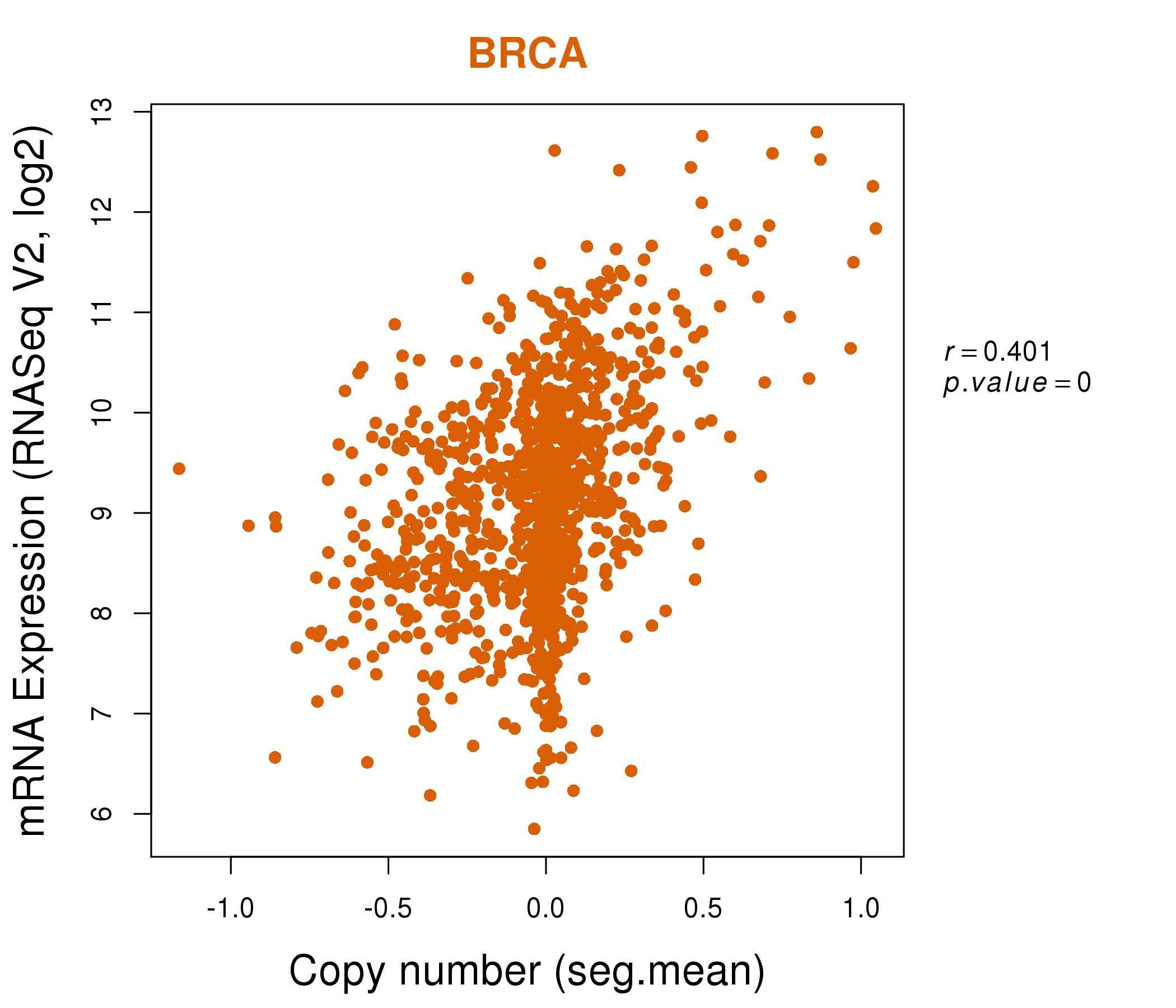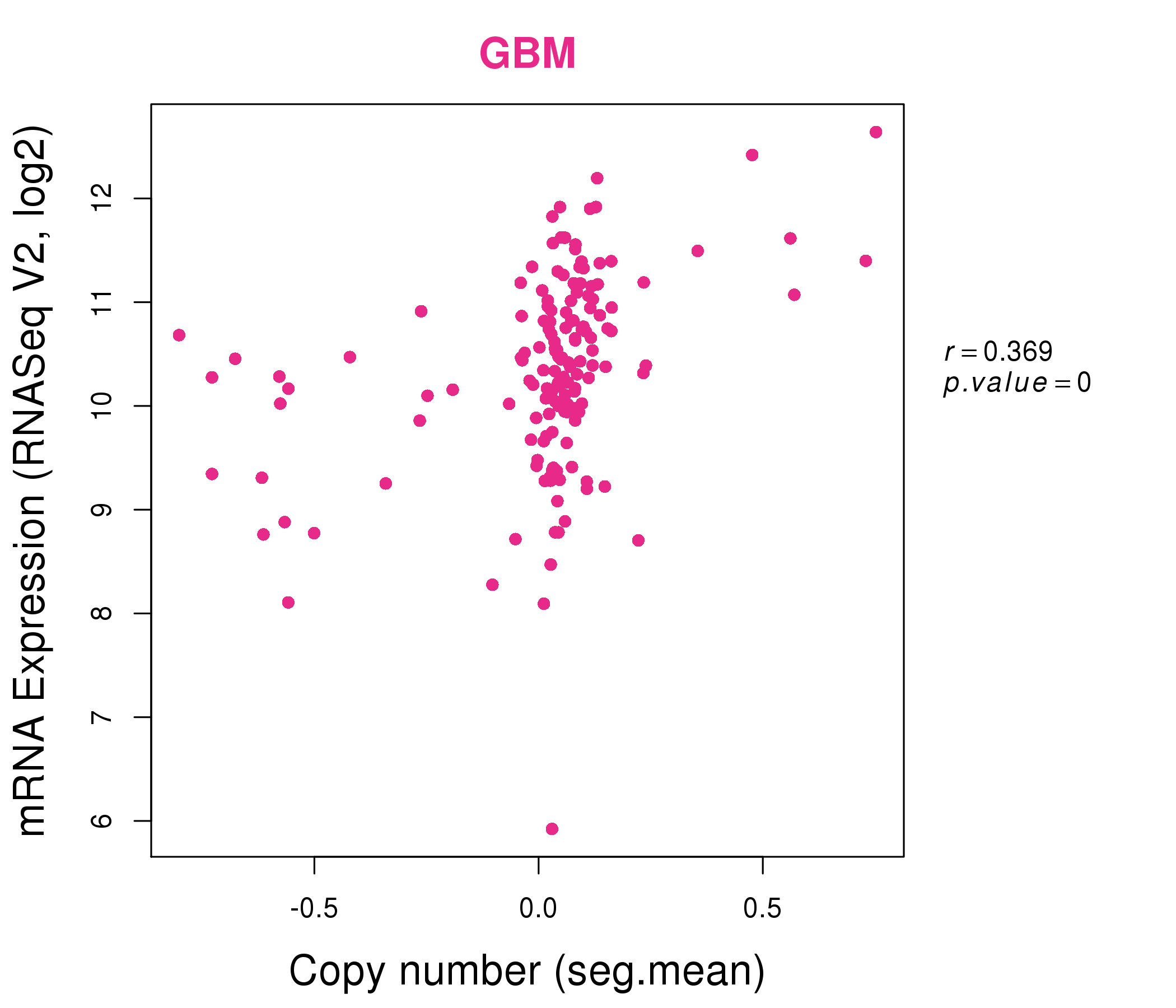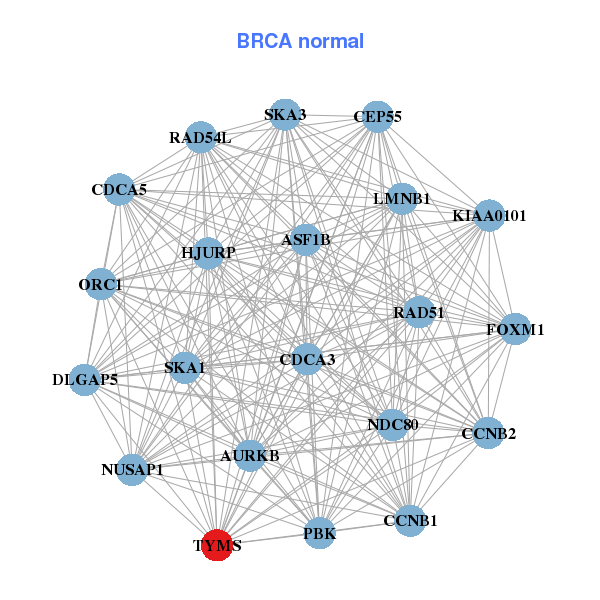|
||||||||||||||||||||||||||||||||||||||||||||||||||||||||||||||||||||||||||||||||||||||||||||||||||||||||||||||||||||||||||||||||||||||||||||||||||||||||||||||||||||||||||||||||||||||||||||||||||||||||||||||||||||||||||||||||||||||||||||||||||||||||||||||||||||||||||||||||||||||||||||||||||||||||||||||||||||||||||||||||||||||||||||||||||||||||||||||||||||||||||||||||||||||||||||||||||||||||||||||||||||||||||||||||||||||||||||||||||||||||||||||||||||||||||||||||||||||||||||||||||||||||||||||||||||||||||||||||||||||||||||||||||||||||||||||||||||||||||||||||||||||||||||||||||||||||||||||||||||||||||||||||||||||||||||||||||||||||||||||||||||||||||||||||||||||||||||||||||||||||||||||||||||||||||||||||||||||||||||||||||||||||||||
| |
| Phenotypic Information (metabolism pathway, cancer, disease, phenome) |
| |
| |
| Gene-Gene Network Information: Co-Expression Network, Interacting Genes & KEGG |
| |
|
| Gene Summary for TYMS |
| Basic gene info. | Gene symbol | TYMS |
| Gene name | thymidylate synthetase | |
| Synonyms | HST422|TMS|TS | |
| Cytomap | UCSC genome browser: 18p11.32 | |
| Genomic location | chr18 :657603-673499 | |
| Type of gene | protein-coding | |
| RefGenes | NM_001071.2, | |
| Ensembl id | ENSG00000176890 | |
| Description | TSasethymidylate synthase | |
| Modification date | 20141207 | |
| dbXrefs | MIM : 188350 | |
| HGNC : HGNC | ||
| Ensembl : ENSG00000176890 | ||
| HPRD : 01774 | ||
| Vega : OTTHUMG00000131473 | ||
| Protein | UniProt: P04818 go to UniProt's Cross Reference DB Table | |
| Expression | CleanEX: HS_TYMS | |
| BioGPS: 7298 | ||
| Gene Expression Atlas: ENSG00000176890 | ||
| The Human Protein Atlas: ENSG00000176890 | ||
| Pathway | NCI Pathway Interaction Database: TYMS | |
| KEGG: TYMS | ||
| REACTOME: TYMS | ||
| ConsensusPathDB | ||
| Pathway Commons: TYMS | ||
| Metabolism | MetaCyc: TYMS | |
| HUMANCyc: TYMS | ||
| Regulation | Ensembl's Regulation: ENSG00000176890 | |
| miRBase: chr18 :657,603-673,499 | ||
| TargetScan: NM_001071 | ||
| cisRED: ENSG00000176890 | ||
| Context | iHOP: TYMS | |
| cancer metabolism search in PubMed: TYMS | ||
| UCL Cancer Institute: TYMS | ||
| Assigned class in ccmGDB | A - This gene has a literature evidence and it belongs to cancer gene. | |
| References showing role of TYMS in cancer cell metabolism | 1. Huang M-Y, Wu C-H, Huang C-M, Chung F-Y, Huang C-W, et al. (2013) DPYD, TYMS, TYMP, TK1, and TK2 Genetic Expressions as Response Markers in Locally Advanced Rectal Cancer Patients Treated with Fluoropyrimidine-Based Chemoradiotherapy. BioMed research international 2013. go to article | |
| Top |
| Phenotypic Information for TYMS(metabolism pathway, cancer, disease, phenome) |
| Cancer | CGAP: TYMS |
| Familial Cancer Database: TYMS | |
| * This gene is included in those cancer gene databases. |
|
|
|
|
|
| . | ||||||||||||||||||||||||||||||||||||||||||||||||||||||||||||||||||||||||||||||||||||||||||||||||||||||||||||||||||||||||||||||||||||||||||||||||||||||||||||||||||||||||||||||||||||||||||||||||||||||||||||||||||||||||||||||||||||||||||||||||||||||||||||||||||||||||||||||||||||||||||||||||||||||||||||||||||||||||||||||||||||||||||||||||||||||||||||||||||||||||||||||||||||||||||||||||||||||||||||||||||||||||||||||||||||||||||||||||||||||||||||||||||||||||||||||||||||||||||||||||||||||||||||||||||||||||||||||||||||||||||||||||||||||||||||||||||||||||||||||||||||||||||||||||||||||||||||||||||||||||||||||||||||||||||||||||||||||||||||||||||||||||||||||||||||||||||||||||||||||||||||||||||||||||||||||||||||||||||||||||||||||
Oncogene 1 | Significant driver gene in | |||||||||||||||||||||||||||||||||||||||||||||||||||||||||||||||||||||||||||||||||||||||||||||||||||||||||||||||||||||||||||||||||||||||||||||||||||||||||||||||||||||||||||||||||||||||||||||||||||||||||||||||||||||||||||||||||||||||||||||||||||||||||||||||||||||||||||||||||||||||||||||||||||||||||||||||||||||||||||||||||||||||||||||||||||||||||||||||||||||||||||||||||||||||||||||||||||||||||||||||||||||||||||||||||||||||||||||||||||||||||||||||||||||||||||||||||||||||||||||||||||||||||||||||||||||||||||||||||||||||||||||||||||||||||||||||||||||||||||||||||||||||||||||||||||||||||||||||||||||||||||||||||||||||||||||||||||||||||||||||||||||||||||||||||||||||||||||||||||||||||||||||||||||||||||||||||||||||||||||||||||||||||||
| cf) number; DB name 1 Oncogene; http://nar.oxfordjournals.org/content/35/suppl_1/D721.long, 2 Tumor Suppressor gene; https://bioinfo.uth.edu/TSGene/, 3 Cancer Gene Census; http://www.nature.com/nrc/journal/v4/n3/abs/nrc1299.html, 4 CancerGenes; http://nar.oxfordjournals.org/content/35/suppl_1/D721.long, 5 Network of Cancer Gene; http://ncg.kcl.ac.uk/index.php, 1Therapeutic Vulnerabilities in Cancer; http://cbio.mskcc.org/cancergenomics/statius/ |
| KEGG_PYRIMIDINE_METABOLISM REACTOME_METABOLISM_OF_NUCLEOTIDES REACTOME_PYRIMIDINE_METABOLISM | |
| OMIM | 188350; gene. |
| Orphanet | 240839; 5-fluorouracil toxicity. 240855; Capecitabine toxicity. 240955; Susceptibility to adverse reaction due to 5-fluorouracil treatment. 240963; Susceptibility to adverse reaction due to capecitabine treatment. |
| Disease | KEGG Disease: TYMS |
| MedGen: TYMS (Human Medical Genetics with Condition) | |
| ClinVar: TYMS | |
| Phenotype | MGI: TYMS (International Mouse Phenotyping Consortium) |
| PhenomicDB: TYMS | |
| Mutations for TYMS |
| * Under tables are showing count per each tissue to give us broad intuition about tissue specific mutation patterns.You can go to the detailed page for each mutation database's web site. |
| There's no structural variation information in COSMIC data for this gene. |
| * From mRNA Sanger sequences, Chitars2.0 arranged chimeric transcripts. This table shows TYMS related fusion information. |
| ID | Head Gene | Tail Gene | Accession | Gene_a | qStart_a | qEnd_a | Chromosome_a | tStart_a | tEnd_a | Gene_a | qStart_a | qEnd_a | Chromosome_a | tStart_a | tEnd_a |
| AW878210 | TYMS | 116 | 135 | 18 | 668840 | 668859 | TGIF2-C20orf24 | 128 | 323 | 20 | 35240288 | 35240483 | |
| DB026411 | TYMS | 1 | 330 | 18 | 660763 | 661092 | TRAIP | 325 | 560 | 3 | 49877735 | 49879334 | |
| Top |
| Mutation type/ Tissue ID | brca | cns | cerv | endome | haematopo | kidn | Lintest | liver | lung | ns | ovary | pancre | prost | skin | stoma | thyro | urina | |||
| Total # sample | 2 | 1 | 1 | 1 | 1 | |||||||||||||||
| GAIN (# sample) | 1 | 1 | 1 | 1 | ||||||||||||||||
| LOSS (# sample) | 1 | 1 |
| cf) Tissue ID; Tissue type (1; Breast, 2; Central_nervous_system, 3; Cervix, 4; Endometrium, 5; Haematopoietic_and_lymphoid_tissue, 6; Kidney, 7; Large_intestine, 8; Liver, 9; Lung, 10; NS, 11; Ovary, 12; Pancreas, 13; Prostate, 14; Skin, 15; Stomach, 16; Thyroid, 17; Urinary_tract) |
| Top |
|
 |
| Top |
| Stat. for Non-Synonymous SNVs (# total SNVs=22) | (# total SNVs=8) |
 |  |
(# total SNVs=0) | (# total SNVs=0) |
| Top |
| * When you move the cursor on each content, you can see more deailed mutation information on the Tooltip. Those are primary_site,primary_histology,mutation(aa),pubmedID. |
| GRCh37 position | Mutation(aa) | Unique sampleID count |
| chr18:670707-670707 | p.A191V | 3 |
| chr18:672957-672957 | p.Y301C | 1 |
| chr18:657867-657867 | p.R42L | 1 |
| chr18:669144-669144 | p.R176K | 1 |
| chr18:670798-670798 | p.L221L | 1 |
| chr18:672968-672968 | p.P305S | 1 |
| chr18:657939-657939 | p.S66N | 1 |
| chr18:670816-670816 | p.I227I | 1 |
| chr18:659673-659673 | p.F80L | 1 |
| chr18:670725-670725 | p.A197D | 1 |
| Top |
|
 |
| Point Mutation/ Tissue ID | 1 | 2 | 3 | 4 | 5 | 6 | 7 | 8 | 9 | 10 | 11 | 12 | 13 | 14 | 15 | 16 | 17 | 18 | 19 | 20 |
| # sample | 1 | 1 | 8 | 1 | 1 | 4 | 1 | 1 | ||||||||||||
| # mutation | 2 | 1 | 7 | 1 | 1 | 4 | 1 | 1 | ||||||||||||
| nonsynonymous SNV | 1 | 1 | 4 | 1 | 1 | 1 | 1 | |||||||||||||
| synonymous SNV | 1 | 4 | 3 | 1 |
| cf) Tissue ID; Tissue type (1; BLCA[Bladder Urothelial Carcinoma], 2; BRCA[Breast invasive carcinoma], 3; CESC[Cervical squamous cell carcinoma and endocervical adenocarcinoma], 4; COAD[Colon adenocarcinoma], 5; GBM[Glioblastoma multiforme], 6; Glioma Low Grade, 7; HNSC[Head and Neck squamous cell carcinoma], 8; KICH[Kidney Chromophobe], 9; KIRC[Kidney renal clear cell carcinoma], 10; KIRP[Kidney renal papillary cell carcinoma], 11; LAML[Acute Myeloid Leukemia], 12; LUAD[Lung adenocarcinoma], 13; LUSC[Lung squamous cell carcinoma], 14; OV[Ovarian serous cystadenocarcinoma ], 15; PAAD[Pancreatic adenocarcinoma], 16; PRAD[Prostate adenocarcinoma], 17; SKCM[Skin Cutaneous Melanoma], 18:STAD[Stomach adenocarcinoma], 19:THCA[Thyroid carcinoma], 20:UCEC[Uterine Corpus Endometrial Carcinoma]) |
| Top |
| * We represented just top 10 SNVs. When you move the cursor on each content, you can see more deailed mutation information on the Tooltip. Those are primary_site, primary_histology, mutation(aa), pubmedID. |
| Genomic Position | Mutation(aa) | Unique sampleID count |
| chr18:670822 | p.D173D | 2 |
| chr18:669136 | p.S229S | 2 |
| chr18:659673 | p.R126G | 1 |
| chr18:670771 | p.R126T | 1 |
| chr18:662242 | p.M149V | 1 |
| chr18:670798 | p.R176K | 1 |
| chr18:662243 | p.L198L | 1 |
| chr18:670816 | p.Y202H | 1 |
| chr18:662311 | p.V204V | 1 |
| chr18:670835 | p.E207K | 1 |
| * Copy number data were extracted from TCGA using R package TCGA-Assembler. The URLs of all public data files on TCGA DCC data server were gathered on Jan-05-2015. Function ProcessCNAData in TCGA-Assembler package was used to obtain gene-level copy number value which is calculated as the average copy number of the genomic region of a gene. |
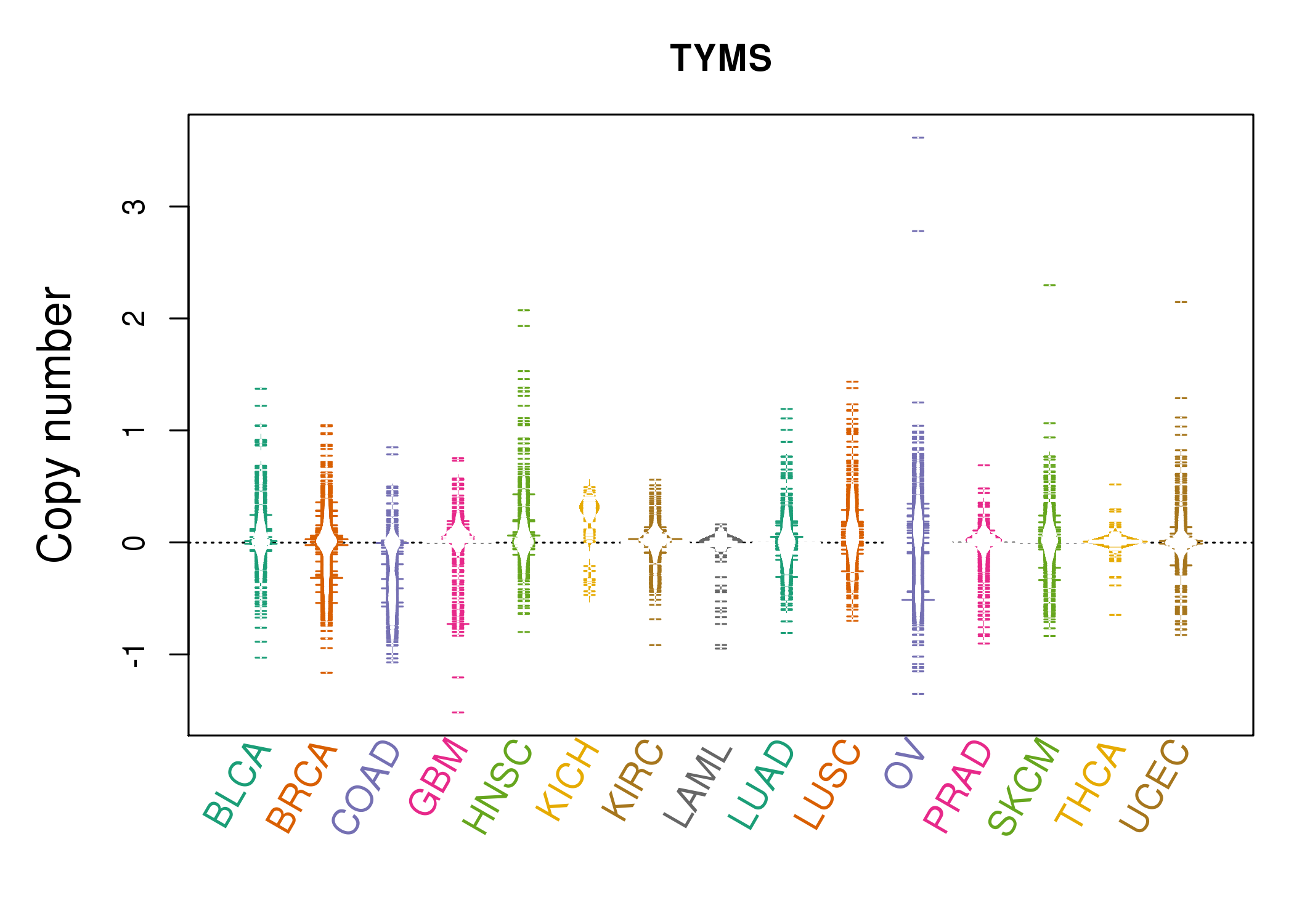 |
| cf) Tissue ID[Tissue type]: BLCA[Bladder Urothelial Carcinoma], BRCA[Breast invasive carcinoma], CESC[Cervical squamous cell carcinoma and endocervical adenocarcinoma], COAD[Colon adenocarcinoma], GBM[Glioblastoma multiforme], Glioma Low Grade, HNSC[Head and Neck squamous cell carcinoma], KICH[Kidney Chromophobe], KIRC[Kidney renal clear cell carcinoma], KIRP[Kidney renal papillary cell carcinoma], LAML[Acute Myeloid Leukemia], LUAD[Lung adenocarcinoma], LUSC[Lung squamous cell carcinoma], OV[Ovarian serous cystadenocarcinoma ], PAAD[Pancreatic adenocarcinoma], PRAD[Prostate adenocarcinoma], SKCM[Skin Cutaneous Melanoma], STAD[Stomach adenocarcinoma], THCA[Thyroid carcinoma], UCEC[Uterine Corpus Endometrial Carcinoma] |
| Top |
| Gene Expression for TYMS |
| * CCLE gene expression data were extracted from CCLE_Expression_Entrez_2012-10-18.res: Gene-centric RMA-normalized mRNA expression data. |
 |
| * Normalized gene expression data of RNASeqV2 was extracted from TCGA using R package TCGA-Assembler. The URLs of all public data files on TCGA DCC data server were gathered at Jan-05-2015. Only eight cancer types have enough normal control samples for differential expression analysis. (t test, adjusted p<0.05 (using Benjamini-Hochberg FDR)) |
 |
| Top |
| * This plots show the correlation between CNV and gene expression. |
: Open all plots for all cancer types
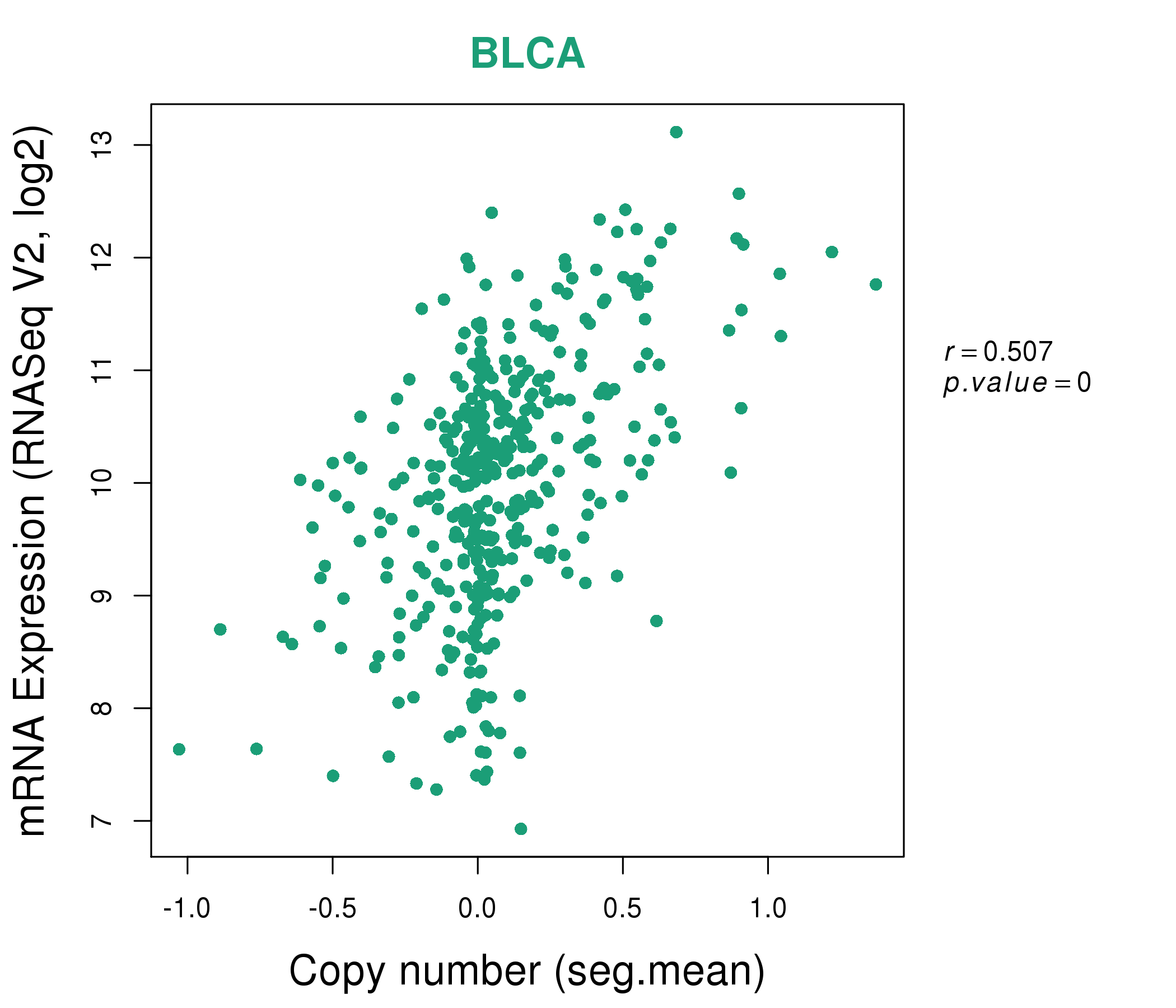 |
|
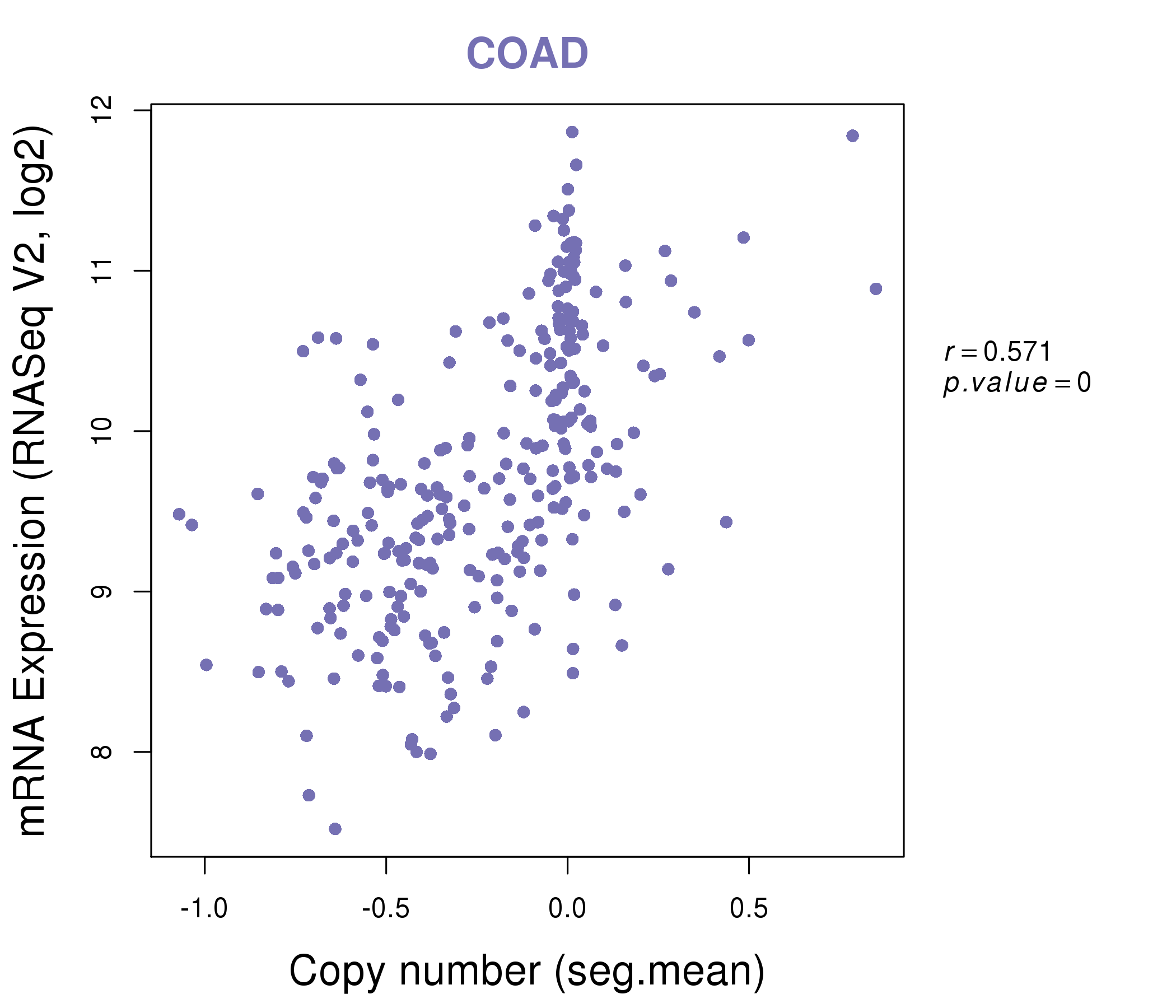 |
|
| Top |
| Gene-Gene Network Information |
| * Co-Expression network figures were drawn using R package igraph. Only the top 20 genes with the highest correlations were shown. Red circle: input gene, orange circle: cell metabolism gene, sky circle: other gene |
: Open all plots for all cancer types
 |
| ||||
| AFG3L2,AURKB,CCNB2,CDC45,CDCA8,EZH2,FAM64A, FOXM1,KIF23,KIF2C,KIF4A,KIFC1,MCM3,MCM7, NDC80,ORC1,PHF19,RAD54L,SKA1,STMN1,TYMS | ASF1B,AURKB,CCNB1,CCNB2,CDCA3,CDCA5,CEP55, DLGAP5,FOXM1,HJURP,KIAA0101,LMNB1,NDC80,NUSAP1, ORC1,PBK,RAD51,RAD54L,SKA1,SKA3,TYMS | ||||
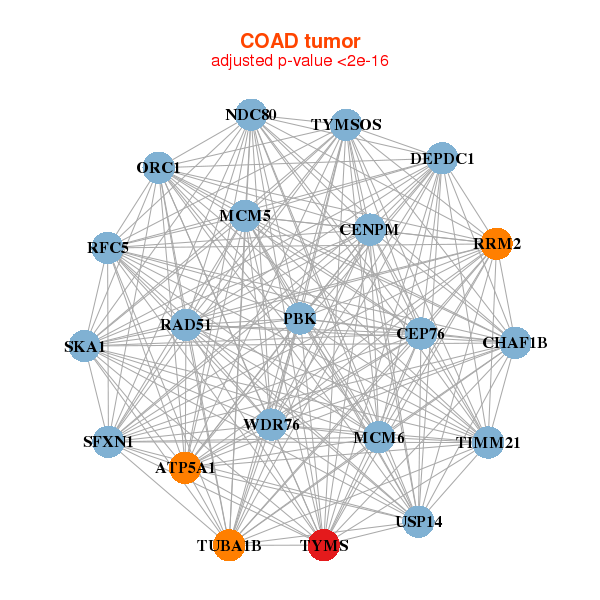 |
| ||||
| ATP5A1,TIMM21,TYMSOS,CENPM,CEP76,CHAF1B,DEPDC1, MCM5,MCM6,NDC80,ORC1,PBK,RAD51,RFC5, RRM2,SFXN1,SKA1,TUBA1B,TYMS,USP14,WDR76 | ASF1B,CDCA5,CEP55,CHEK1,DIAPH3,ERCC6L,EXO1, FANCI,FEN1,GINS4,MCM10,MELK,NCAPG,NCAPH, ORC1,RAD54L,RRM2,SKA3,TK1,TRIP13,TYMS |
| * Co-Expression network figures were drawn using R package igraph. Only the top 20 genes with the highest correlations were shown. Red circle: input gene, orange circle: cell metabolism gene, sky circle: other gene |
: Open all plots for all cancer types
| Top |
: Open all interacting genes' information including KEGG pathway for all interacting genes from DAVID
| Top |
| Pharmacological Information for TYMS |
| DB Category | DB Name | DB's ID and Url link |
| Chemistry | BindingDB | P04818; -. |
| Chemistry | ChEMBL | CHEMBL1952; -. |
| Chemistry | GuidetoPHARMACOLOGY | 2642; -. |
| Organism-specific databases | PharmGKB | PA359; -. |
| Organism-specific databases | CTD | 7298; -. |
| * Gene Centered Interaction Network. |
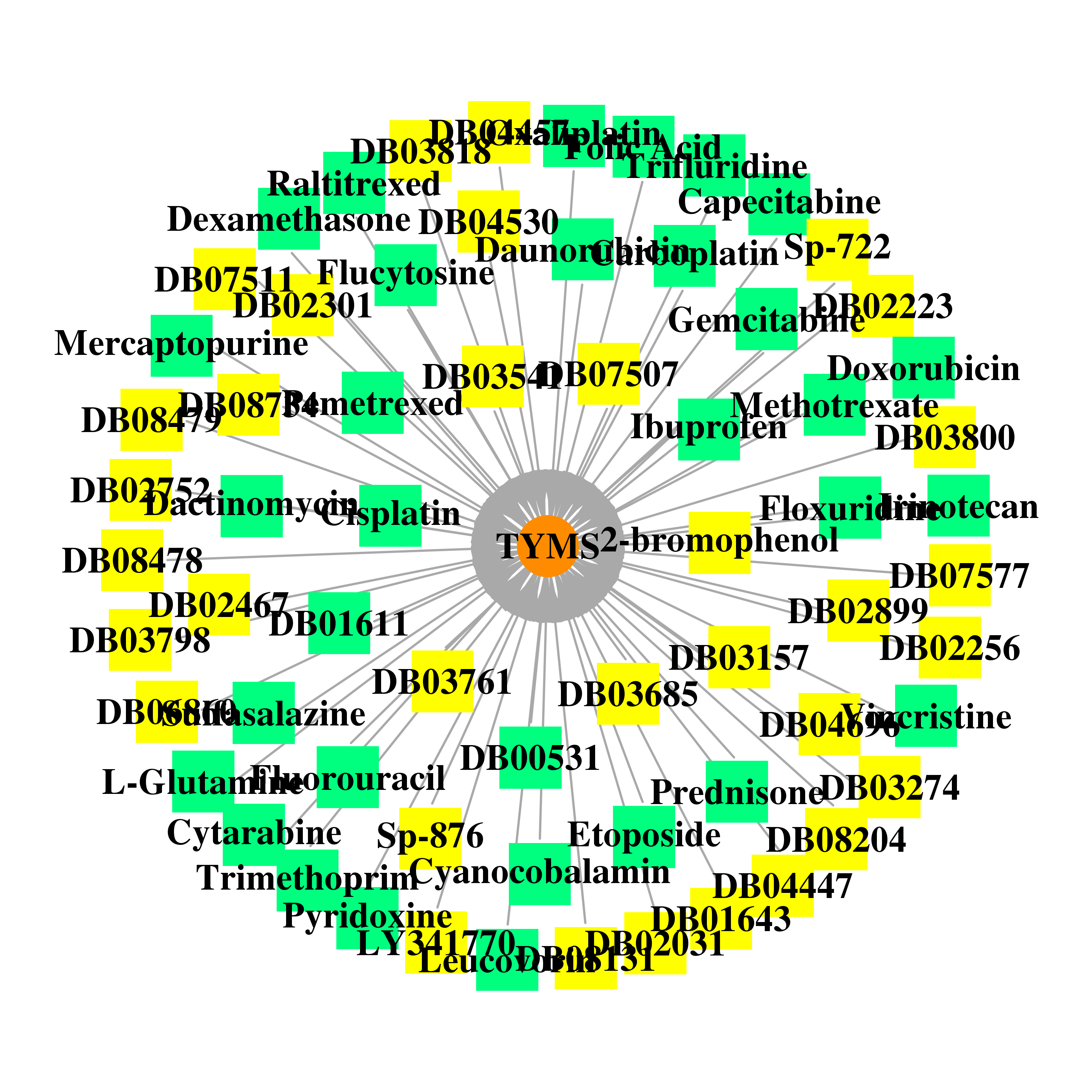 |
| * Drug Centered Interaction Network. |
| DrugBank ID | Target Name | Drug Groups | Generic Name | Drug Centered Network | Drug Structure |
| DB01099 | thymidylate synthetase | approved | Flucytosine |  |  |
| DB00293 | thymidylate synthetase | approved; investigational | Raltitrexed | 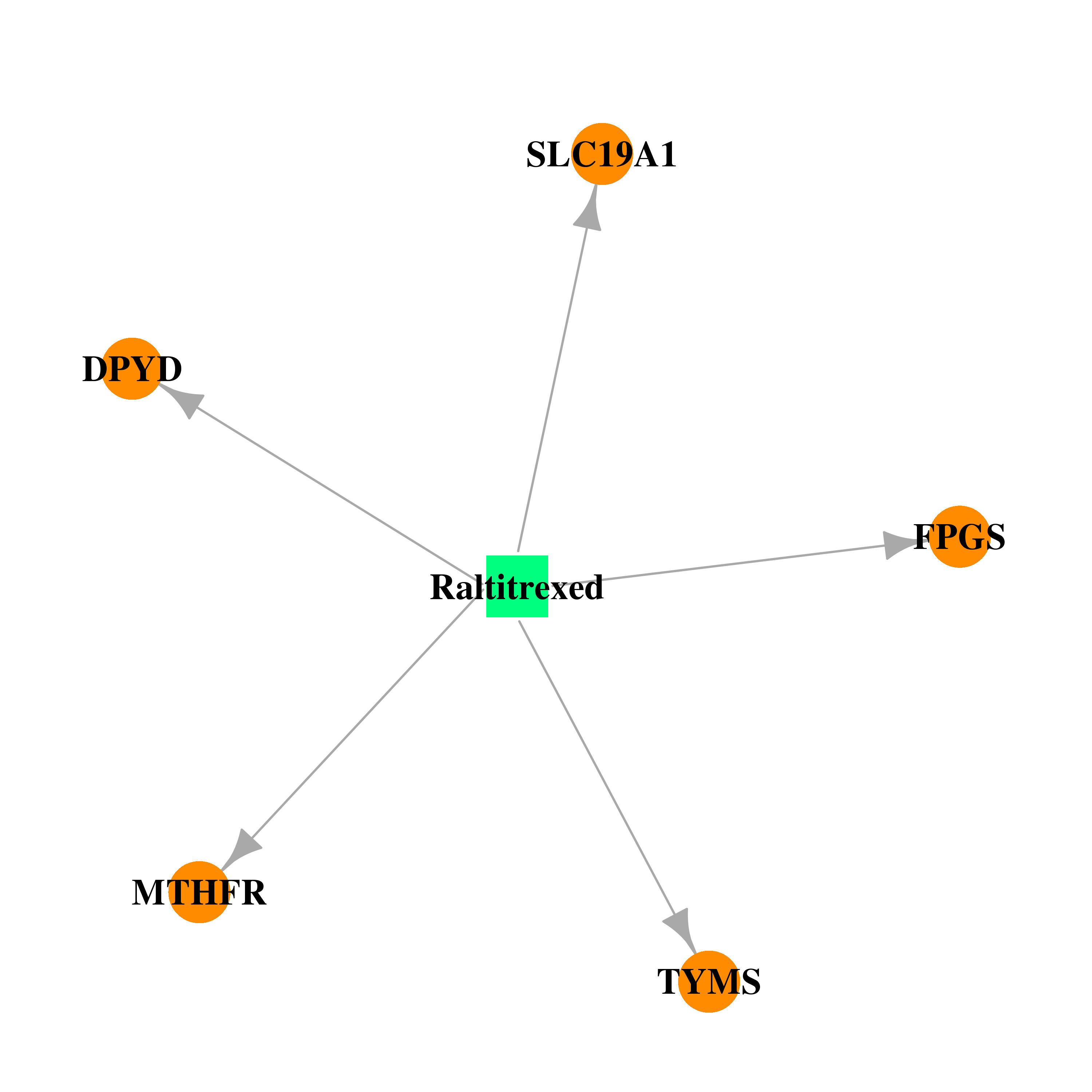 | 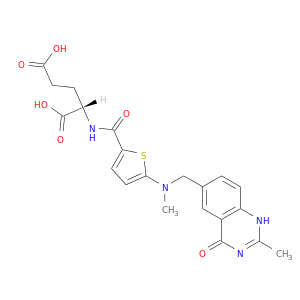 |
| DB00322 | thymidylate synthetase | approved | Floxuridine | 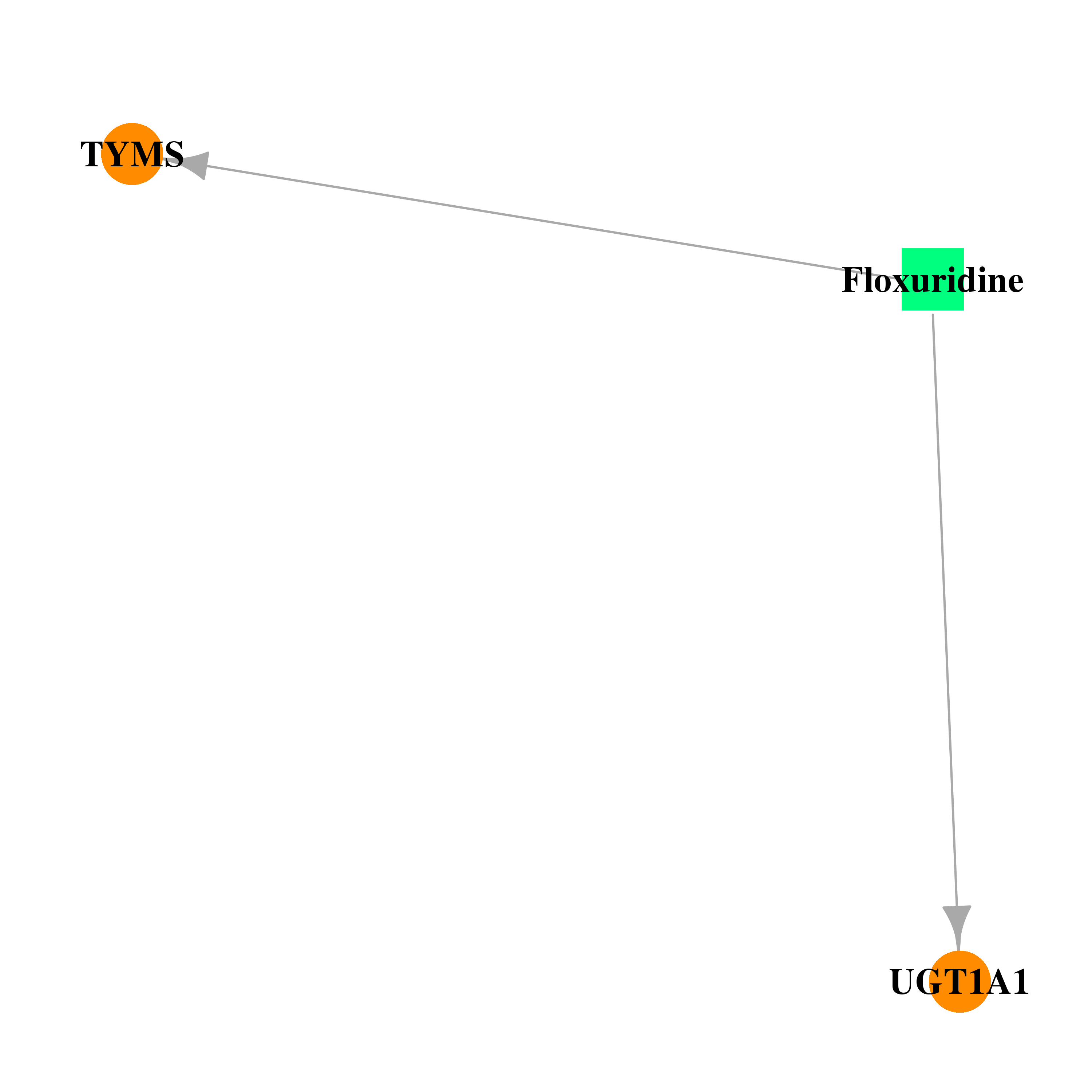 | 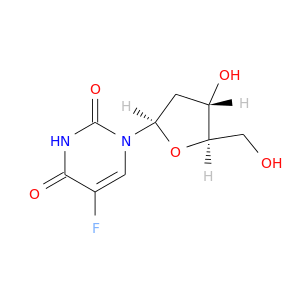 |
| DB00432 | thymidylate synthetase | approved | Trifluridine | 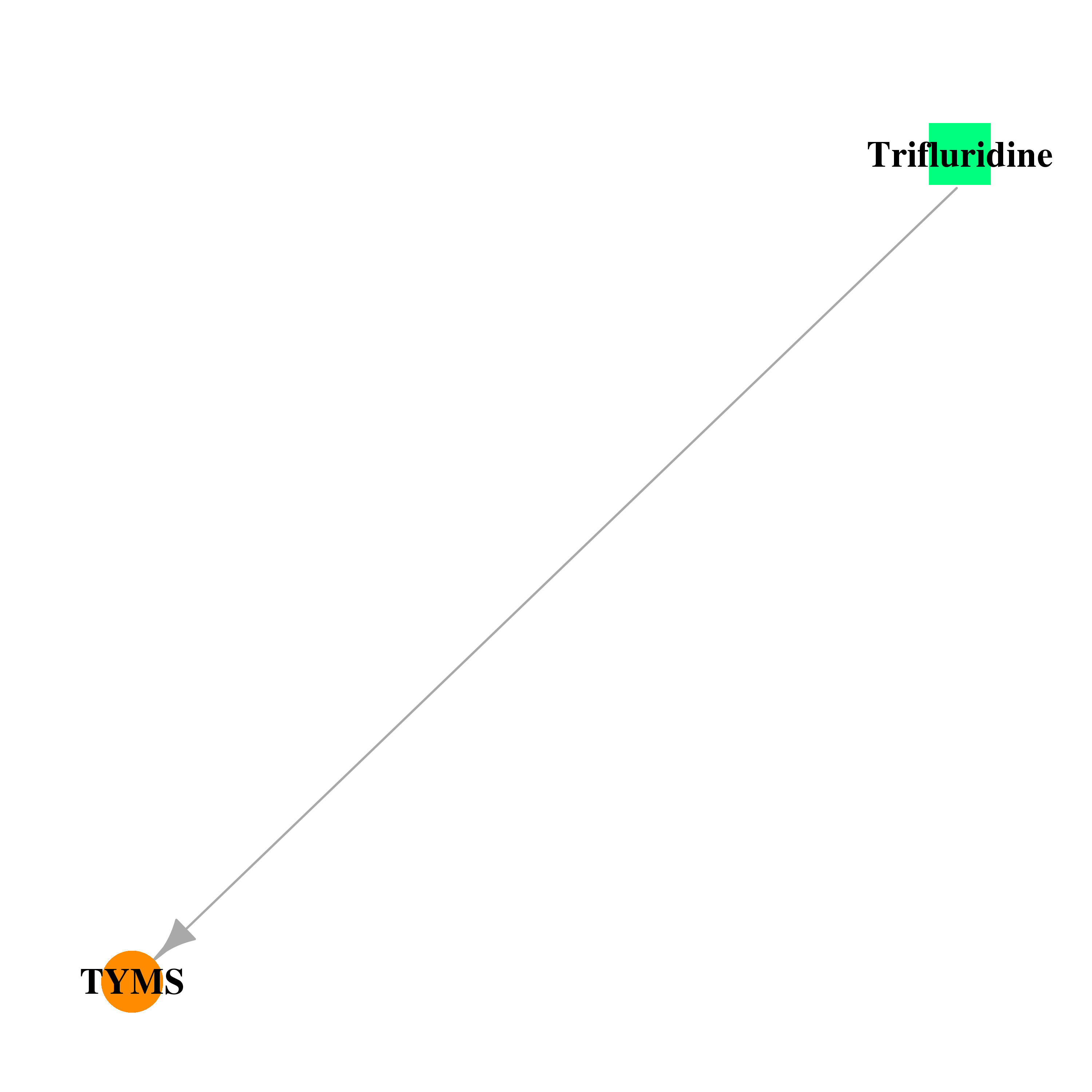 |  |
| DB00440 | thymidylate synthetase | approved | Trimethoprim | 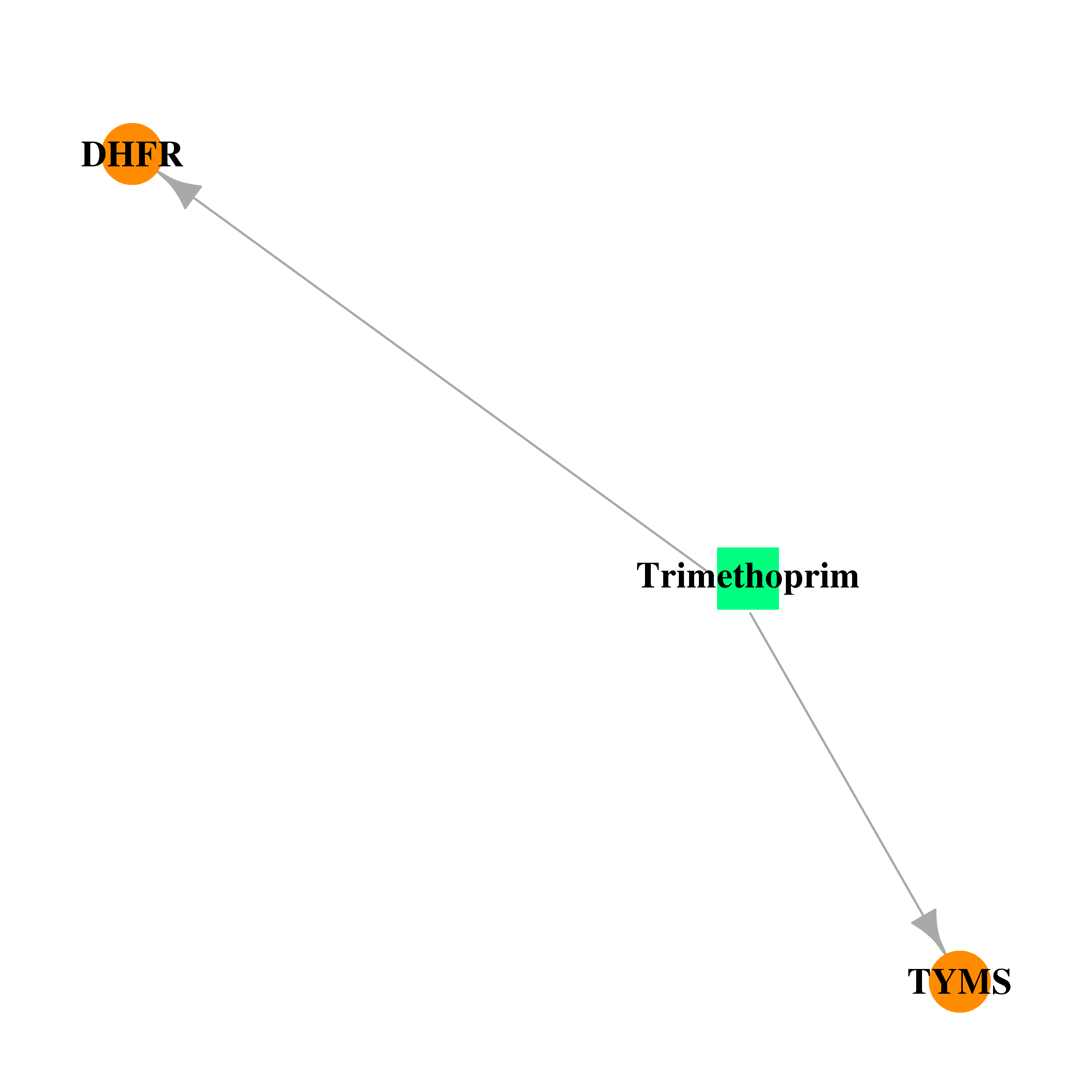 |  |
| DB00441 | thymidylate synthetase | approved | Gemcitabine |  | 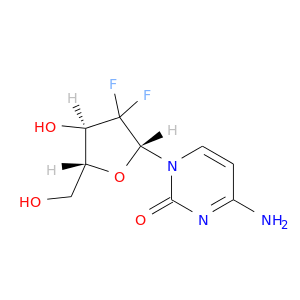 |
| DB00544 | thymidylate synthetase | approved | Fluorouracil |  |  |
| DB00642 | thymidylate synthetase | approved; investigational | Pemetrexed | 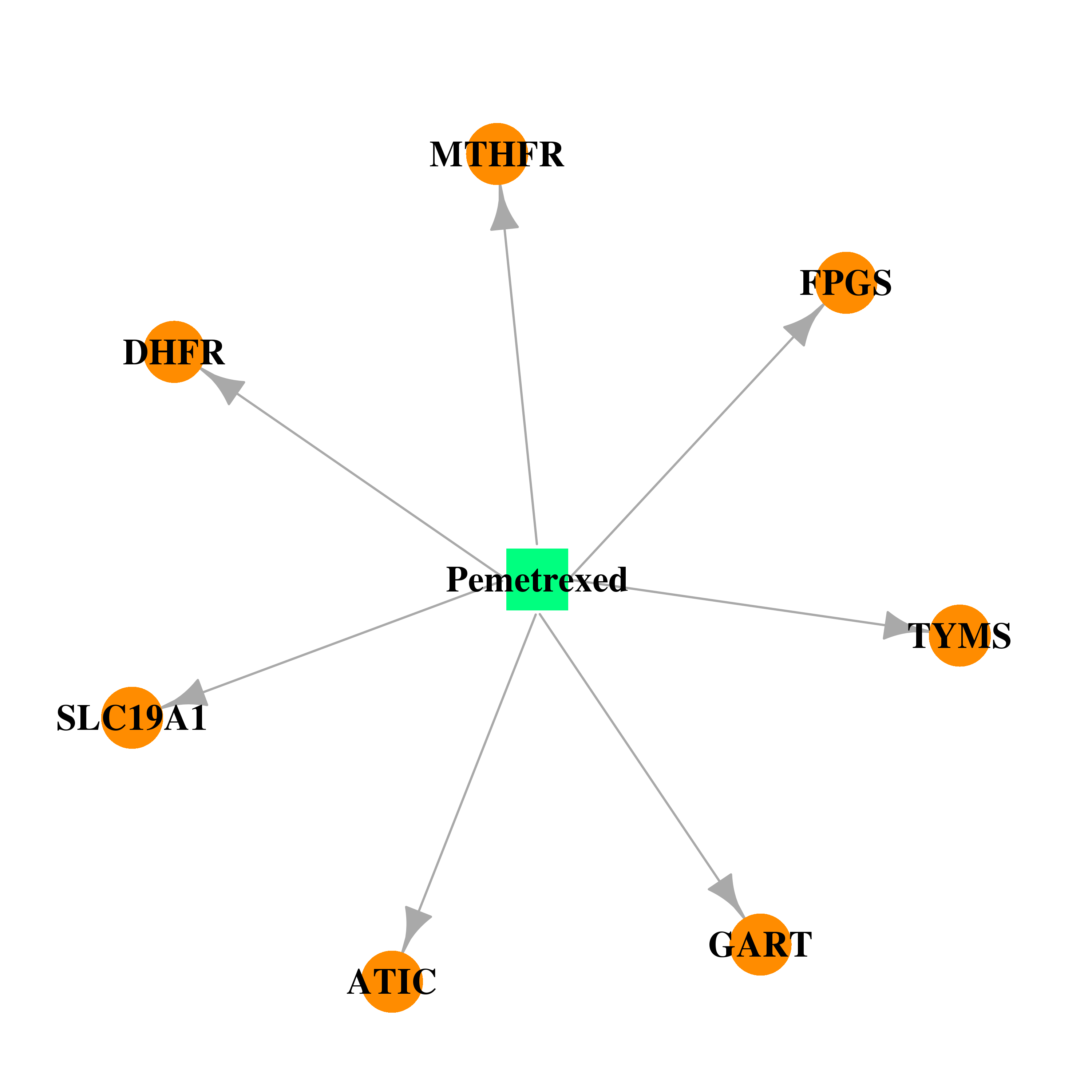 |  |
| DB00650 | thymidylate synthetase | approved | Leucovorin |  | 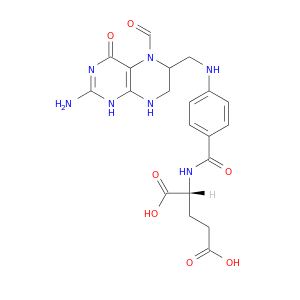 |
| DB01101 | thymidylate synthetase | approved; investigational | Capecitabine |  | 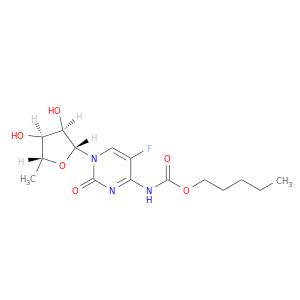 |
| DB01643 | thymidylate synthetase | experimental | Thymidine-5'-Phosphate |  | 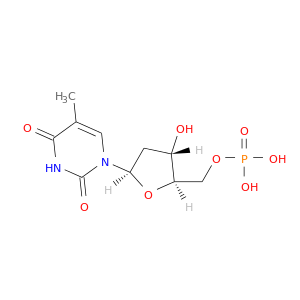 |
| DB03541 | thymidylate synthetase | experimental | 10-Propargyl-5,8-Dideazafolic Acid |  |  |
| DB03800 | thymidylate synthetase | experimental | 2'-deoxyuridylic acid |  |  |
| DB04530 | thymidylate synthetase | experimental | S,S-(2-Hydroxyethyl)Thiocysteine | 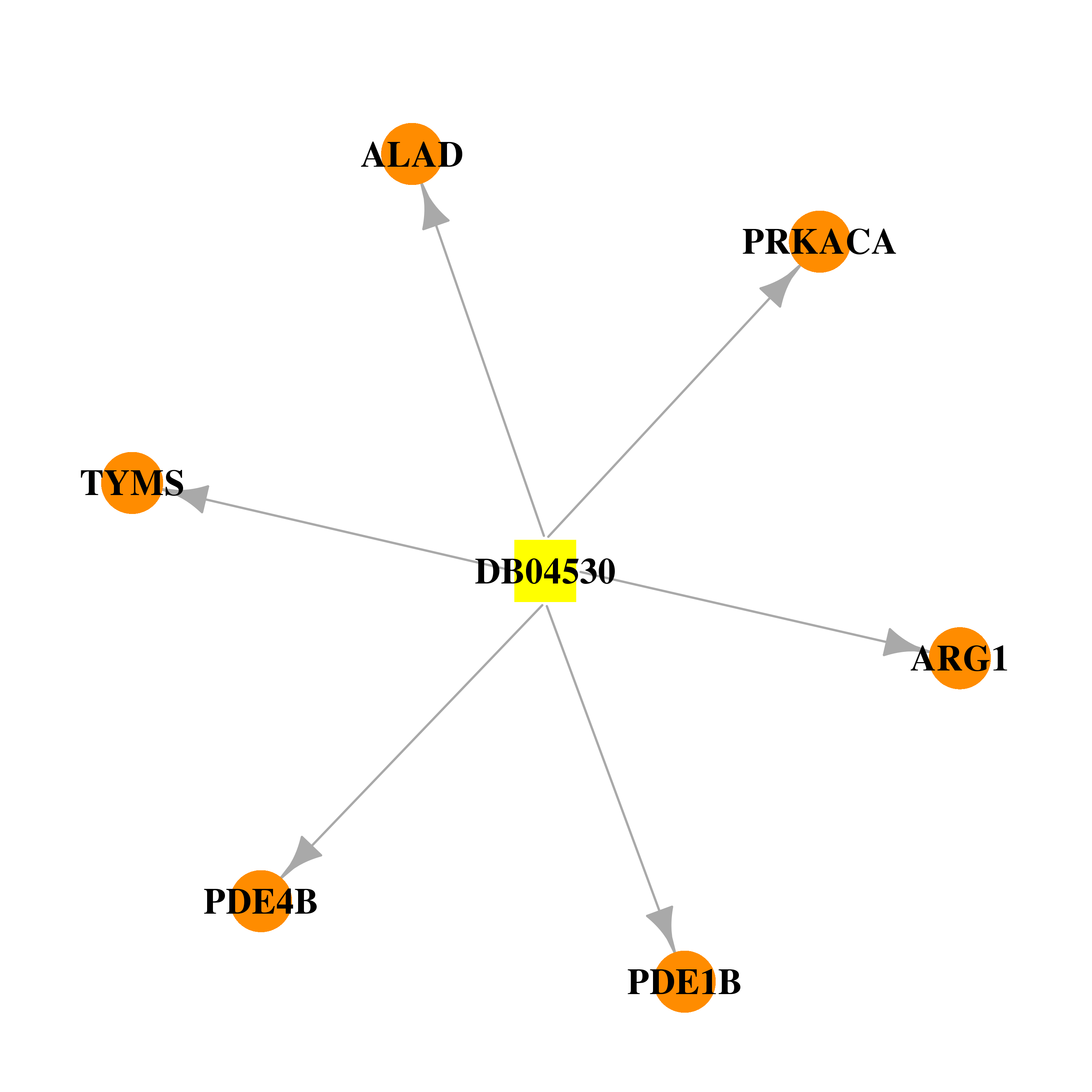 | 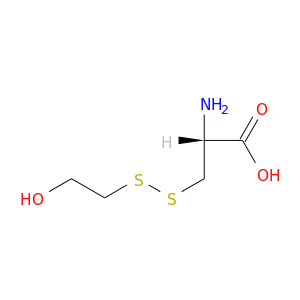 |
| DB07577 | thymidylate synthetase | experimental | 6-ETHYL-5-PHENYLPYRIMIDINE-2,4-DIAMINE |  |  |
| DB08478 | thymidylate synthetase | experimental | N-[2-chloro-5-(trifluoromethyl)phenyl]imidodicarbonimidic diamide | 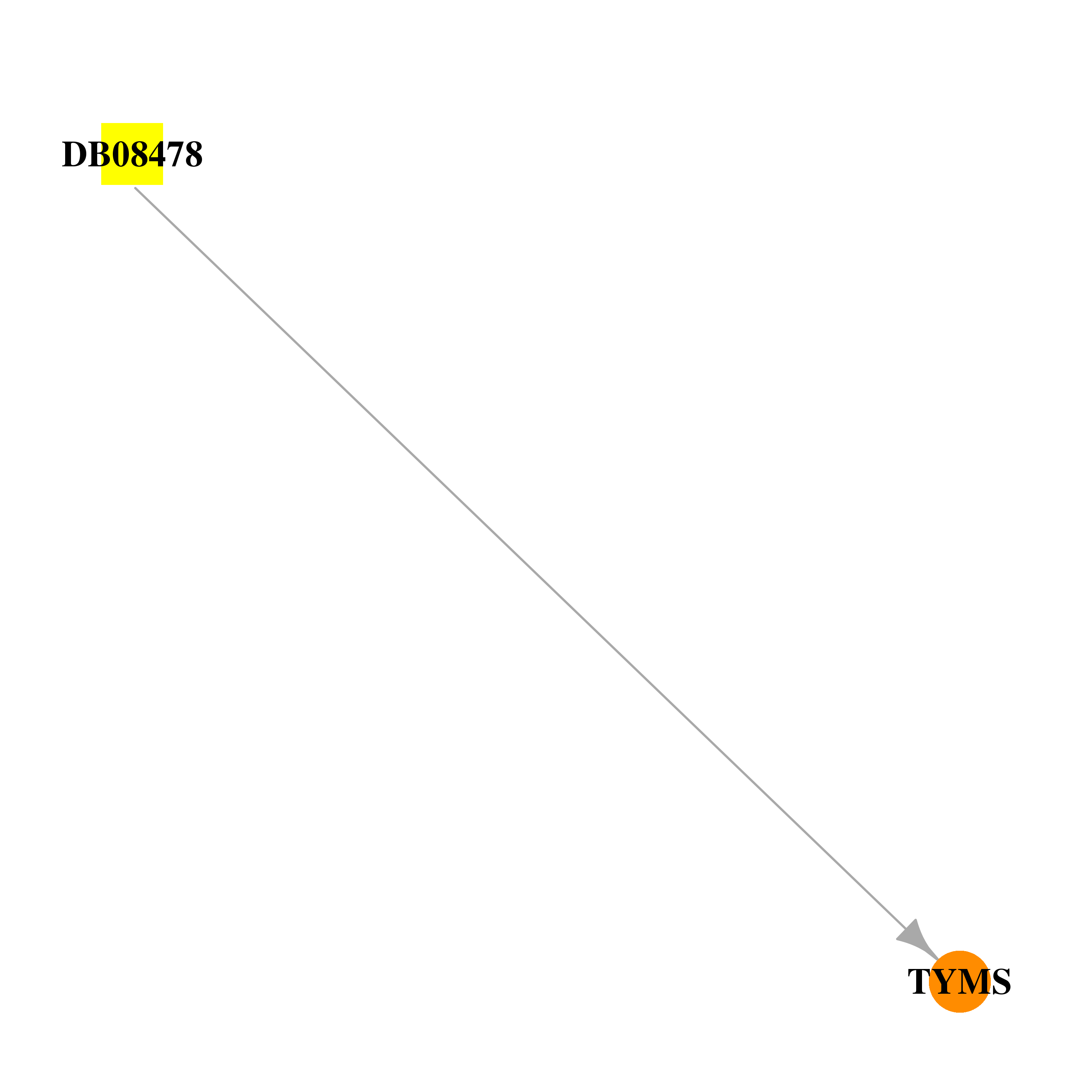 |  |
| DB08479 | thymidylate synthetase | experimental | N-(3,5-dimethoxyphenyl)imidodicarbonimidic diamide | 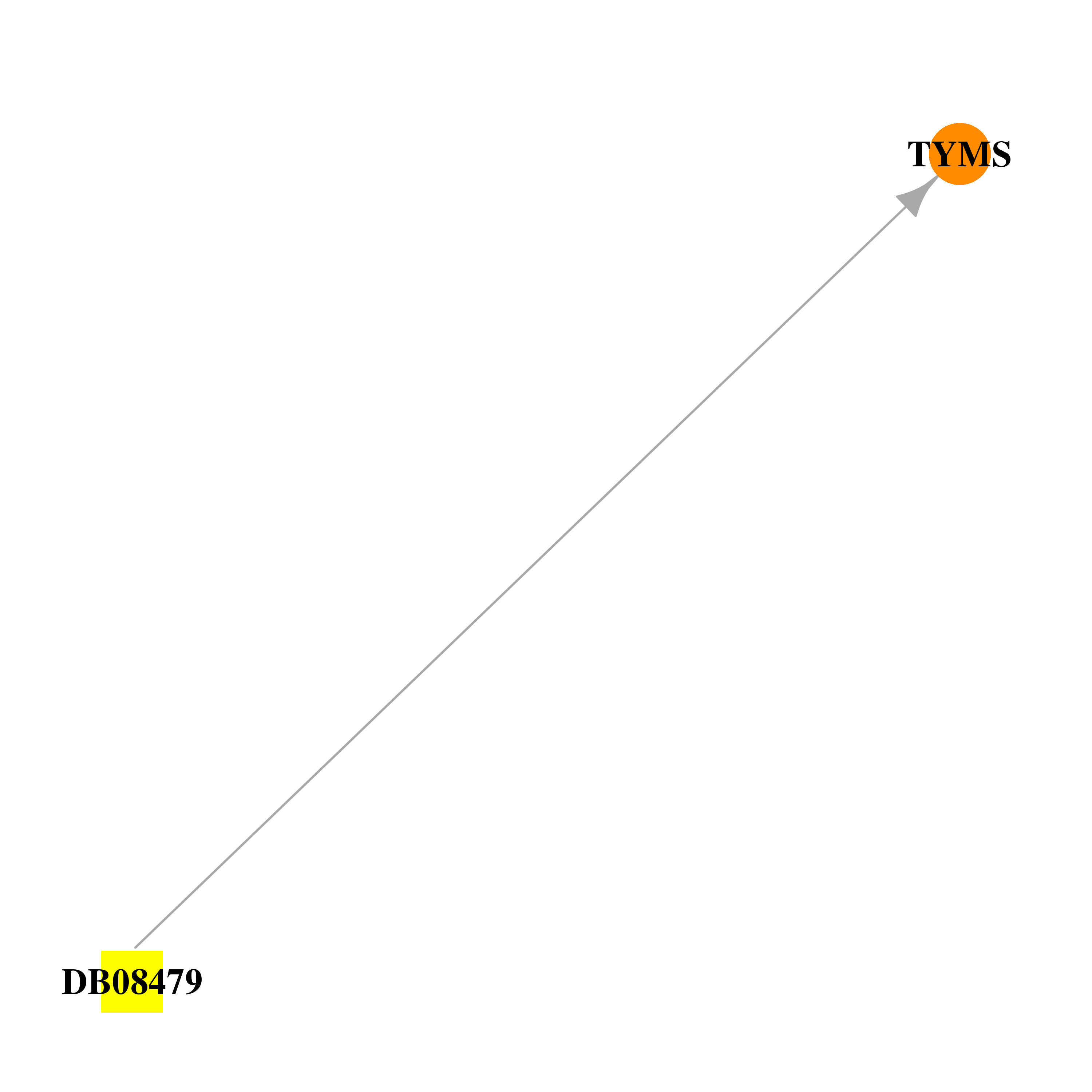 | 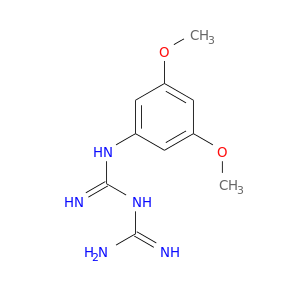 |
| DB08734 | thymidylate synthetase | experimental | 6,6-DIMETHYL-1-[3-(2,4,5-TRICHLOROPHENOXY)PROPOXY]-1,6-DIHYDRO-1,3,5-TRIAZINE-2,4-DIAMINE |  | 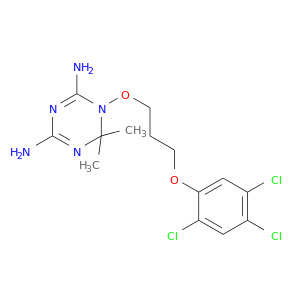 |
| DB02031 | thymidylate synthetase | experimental | (6s)-5,6,7,8-Tetrahydrofolate |  | 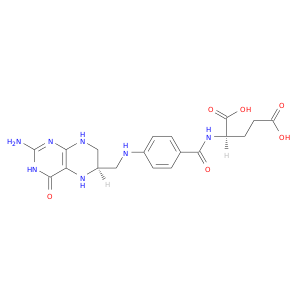 |
| DB02223 | thymidylate synthetase | experimental | Ly231514 Tetra Glu |  | 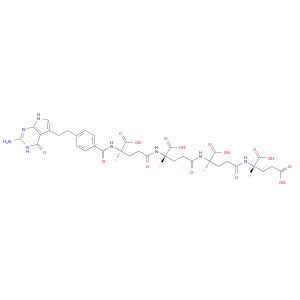 |
| DB02256 | thymidylate synthetase | experimental | 2'-Deoxyuridine | 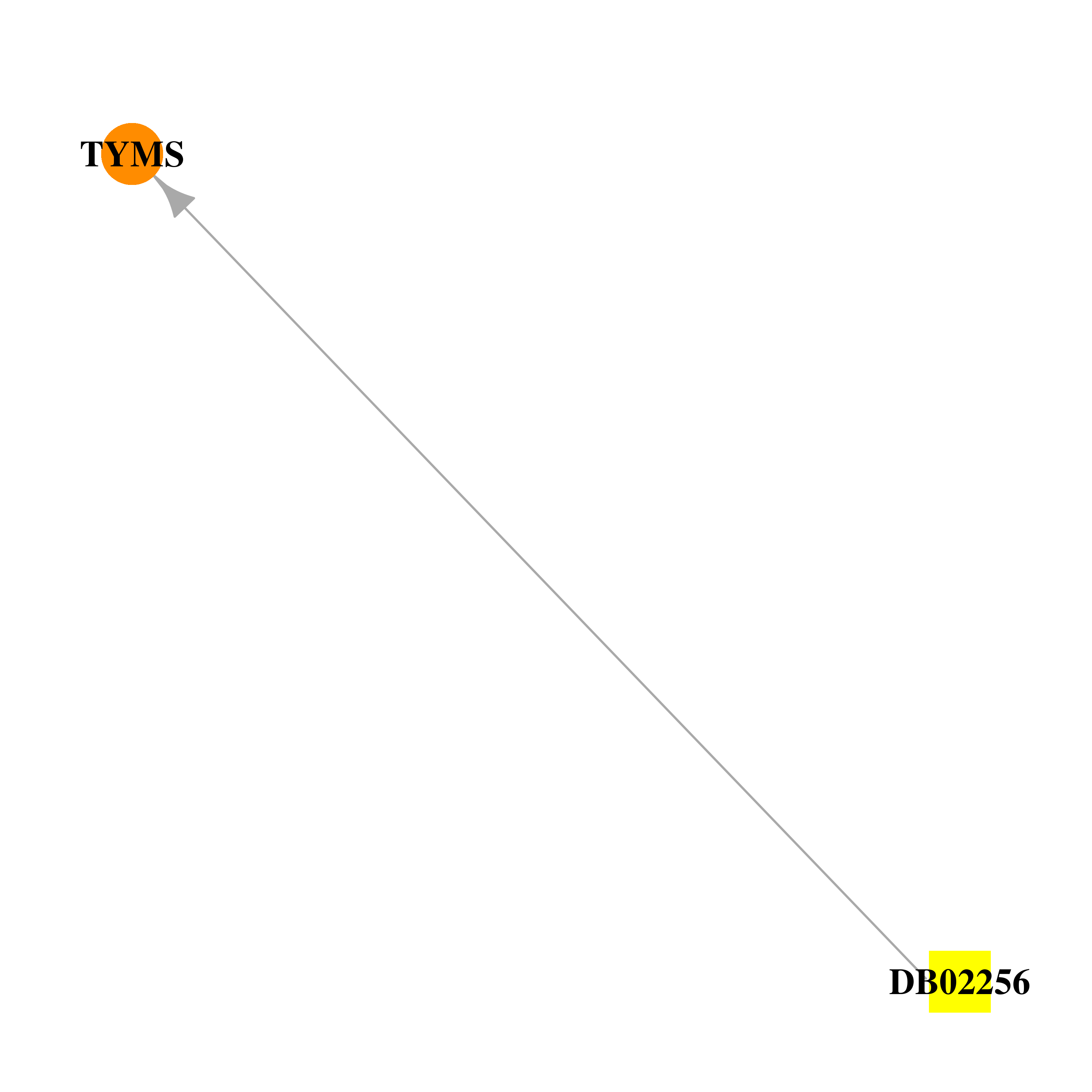 |  |
| DB02301 | thymidylate synthetase | experimental | 5,10-Methylene-6-Hydrofolic Acid |  |  |
| DB02467 | thymidylate synthetase | experimental | S-Oxymethionine | 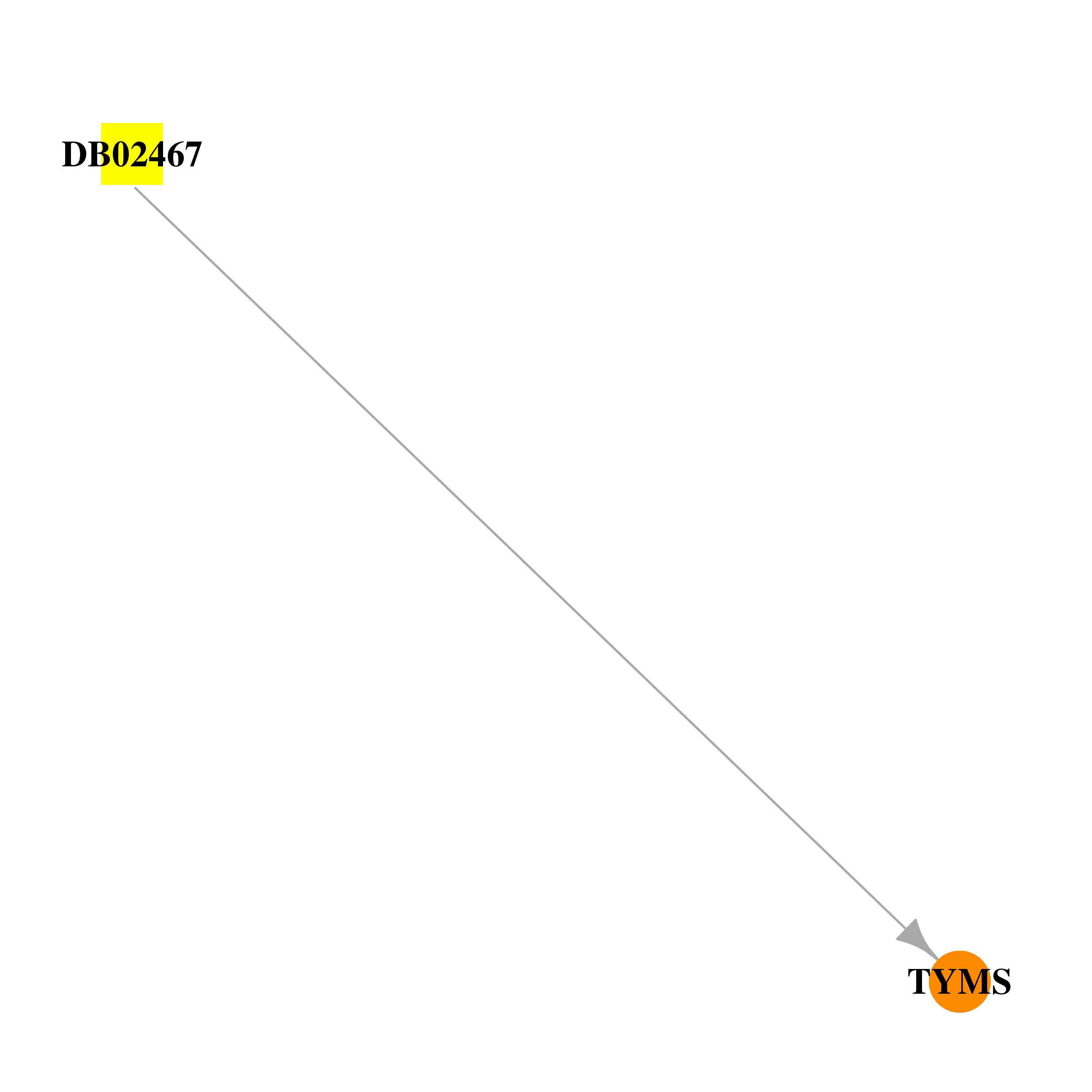 | 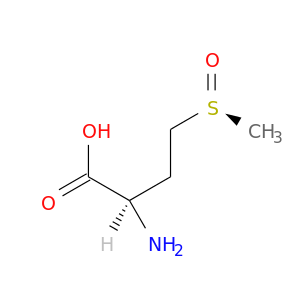 |
| DB02752 | thymidylate synthetase | experimental | Tosyl-D-Proline | 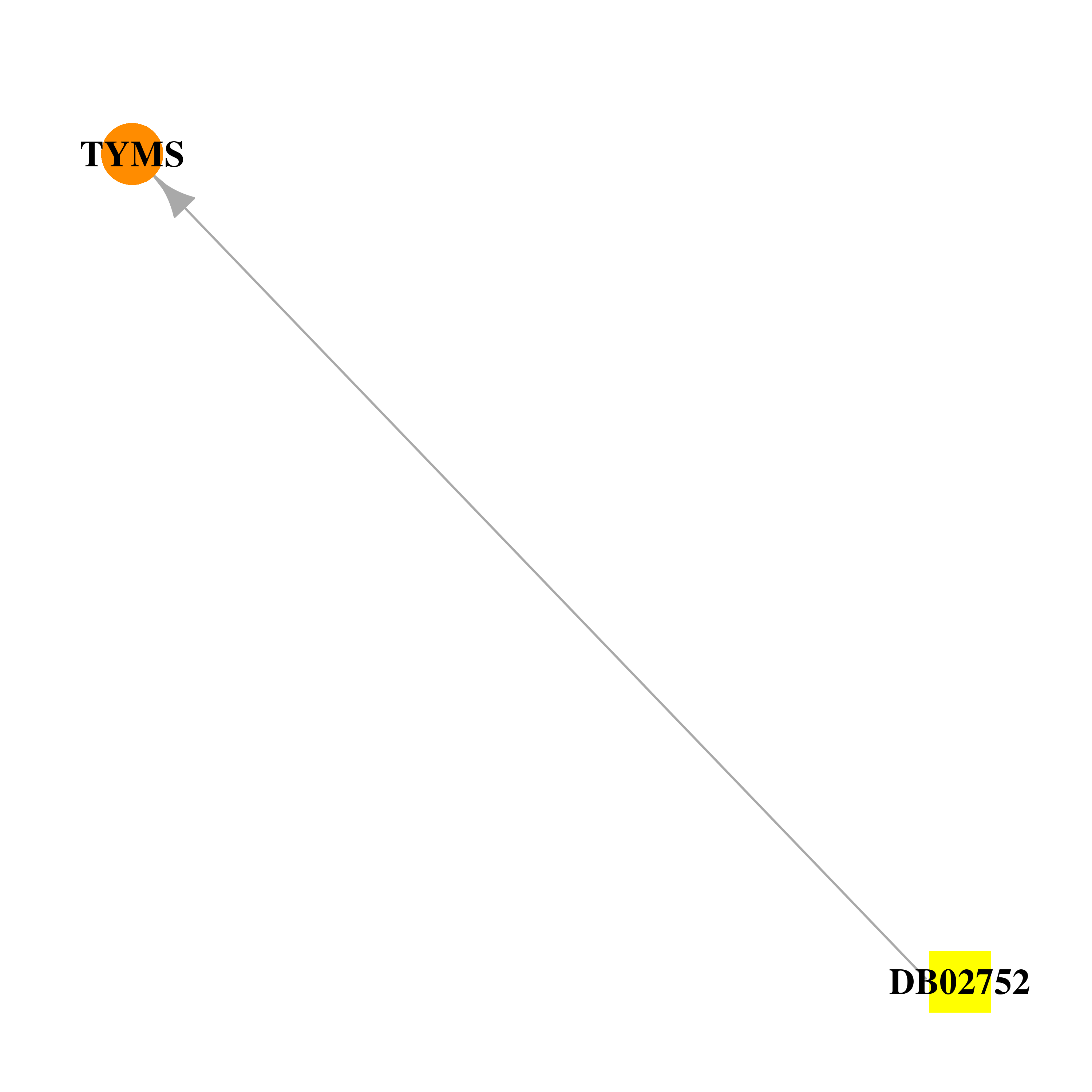 |  |
| DB02899 | thymidylate synthetase | experimental | N-Carboxymethionine |  | 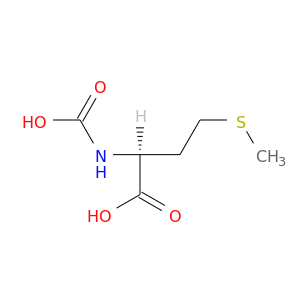 |
| DB03038 | thymidylate synthetase | experimental | LY341770 | 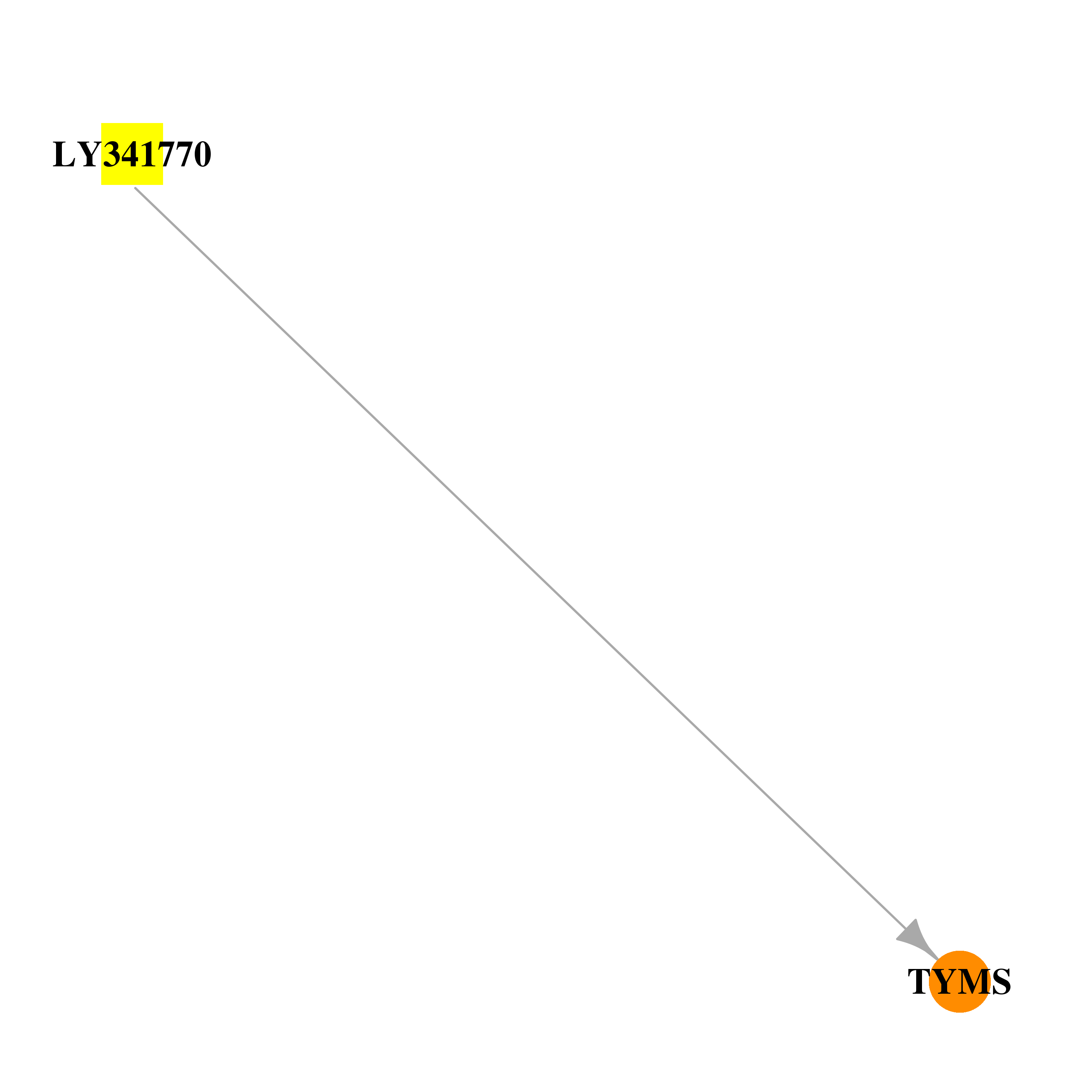 | 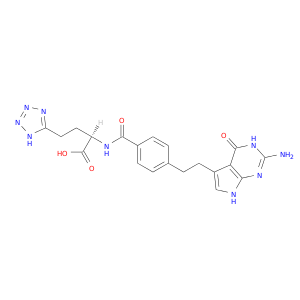 |
| DB03157 | thymidylate synthetase | experimental | N,O-Didansyl-L-Tyrosine |  |  |
| DB03274 | thymidylate synthetase | experimental | 2'-5'dideoxyuridine | 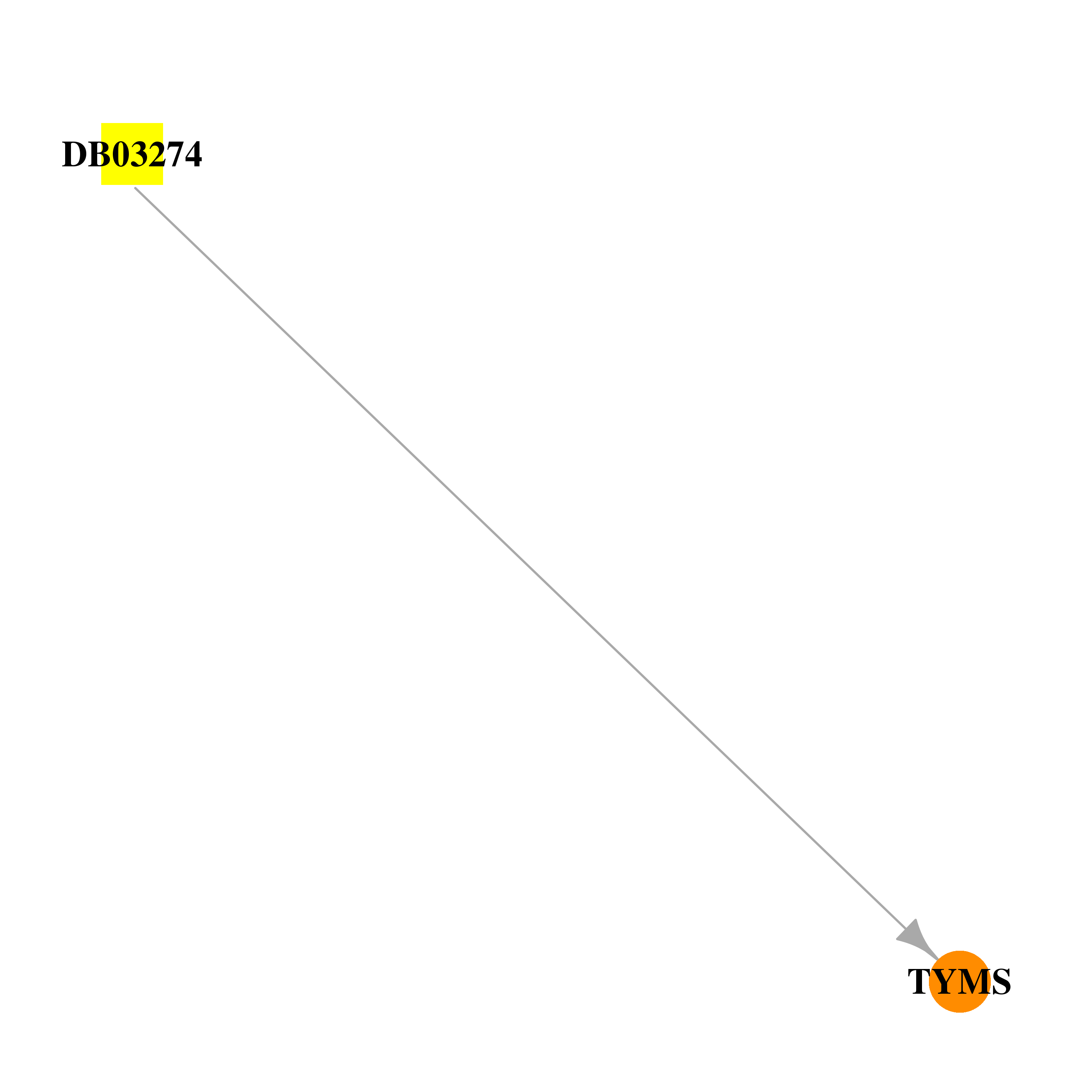 | 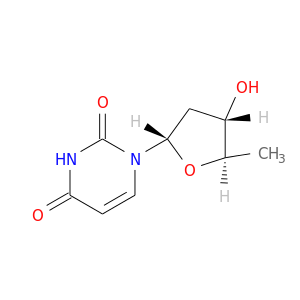 |
| DB03558 | thymidylate synthetase | experimental | Sp-876 | 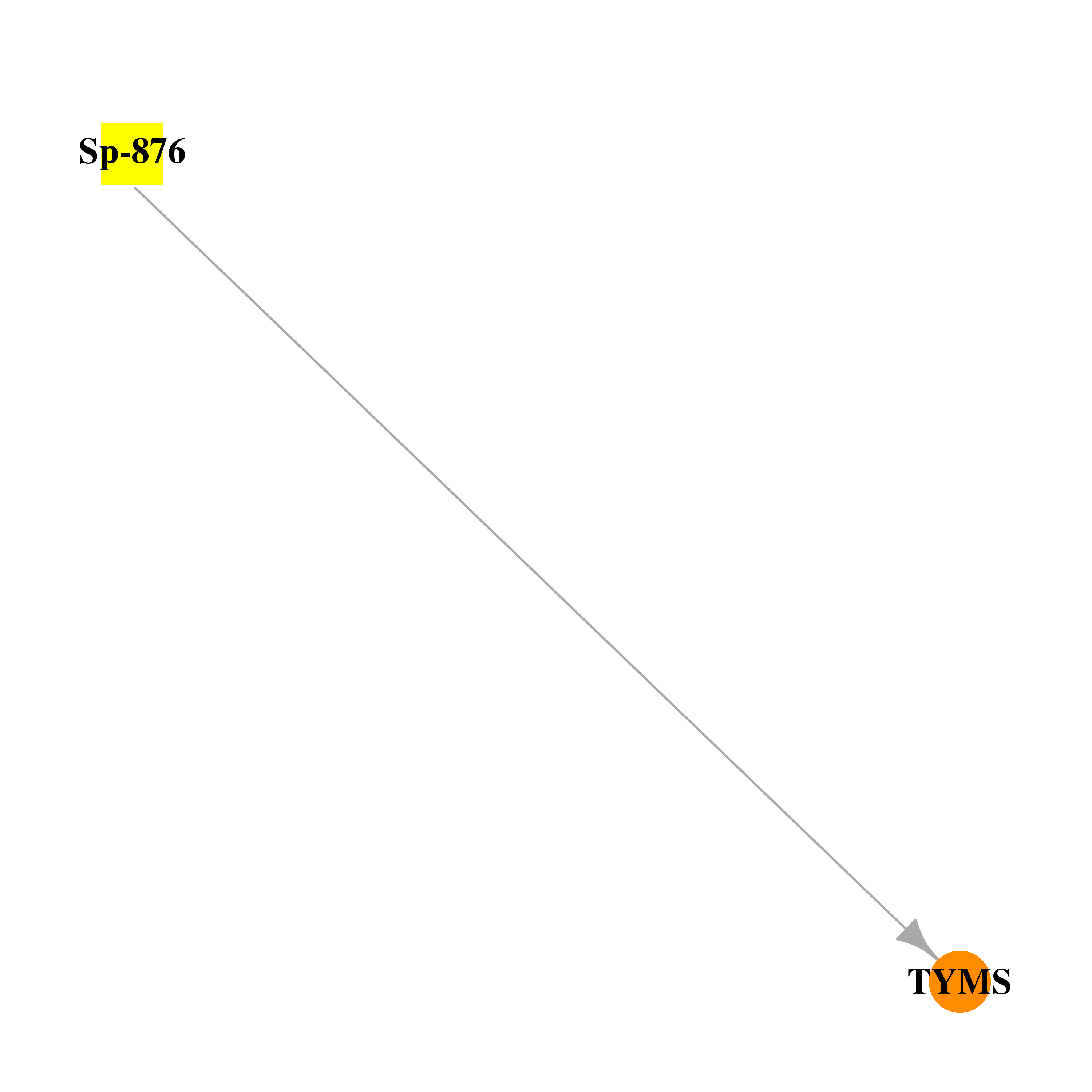 | 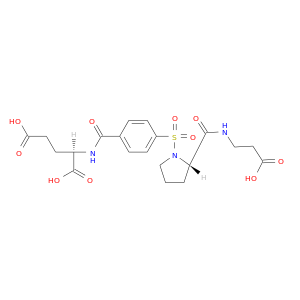 |
| DB03761 | thymidylate synthetase | experimental | 5-Fluoro-2'-Deoxyuridine-5'-Monophosphate | 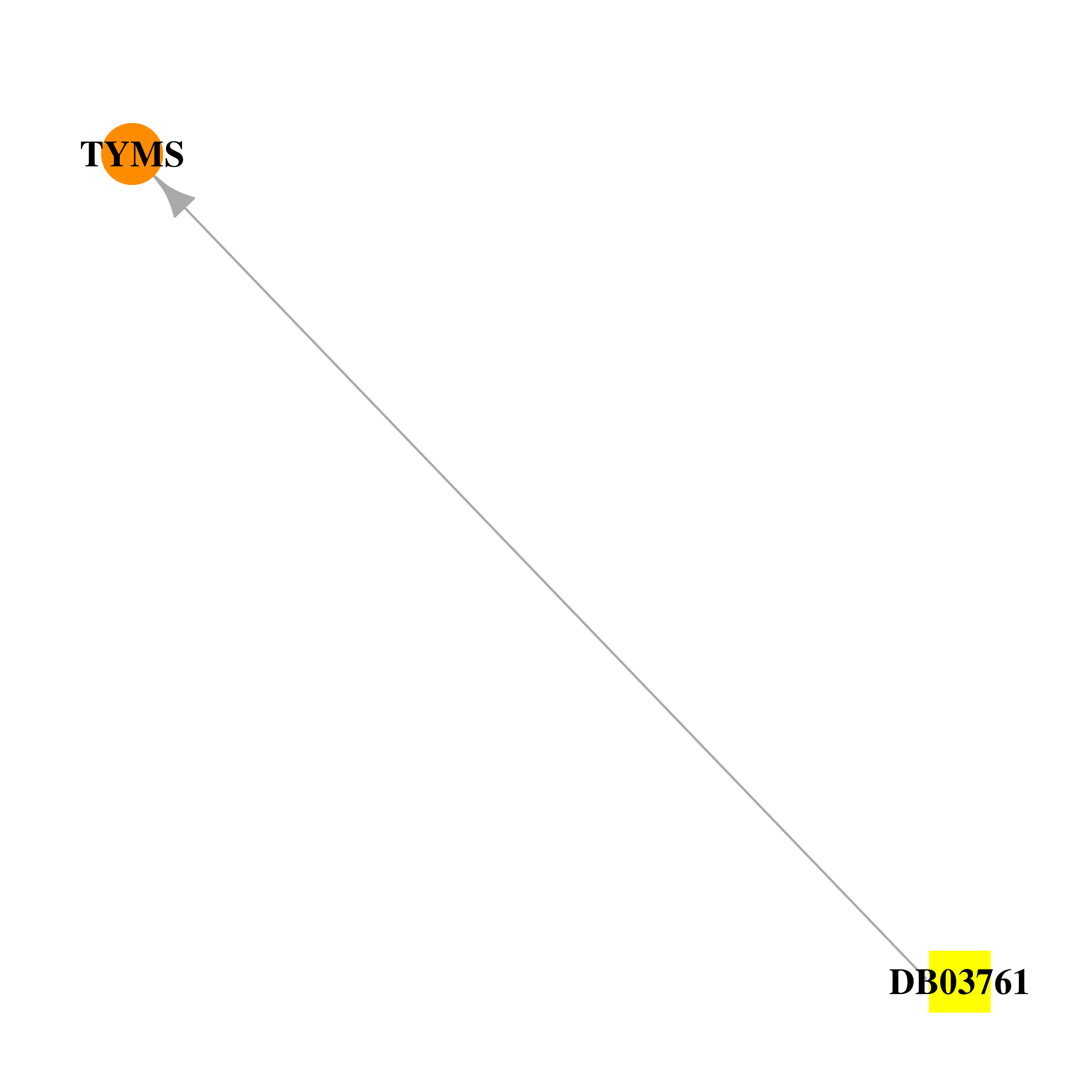 | 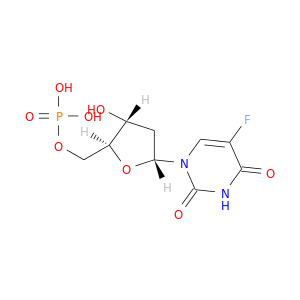 |
| DB03818 | thymidylate synthetase | experimental | N-[Tosyl-D-Prolinyl]Amino-Ethanethiol | 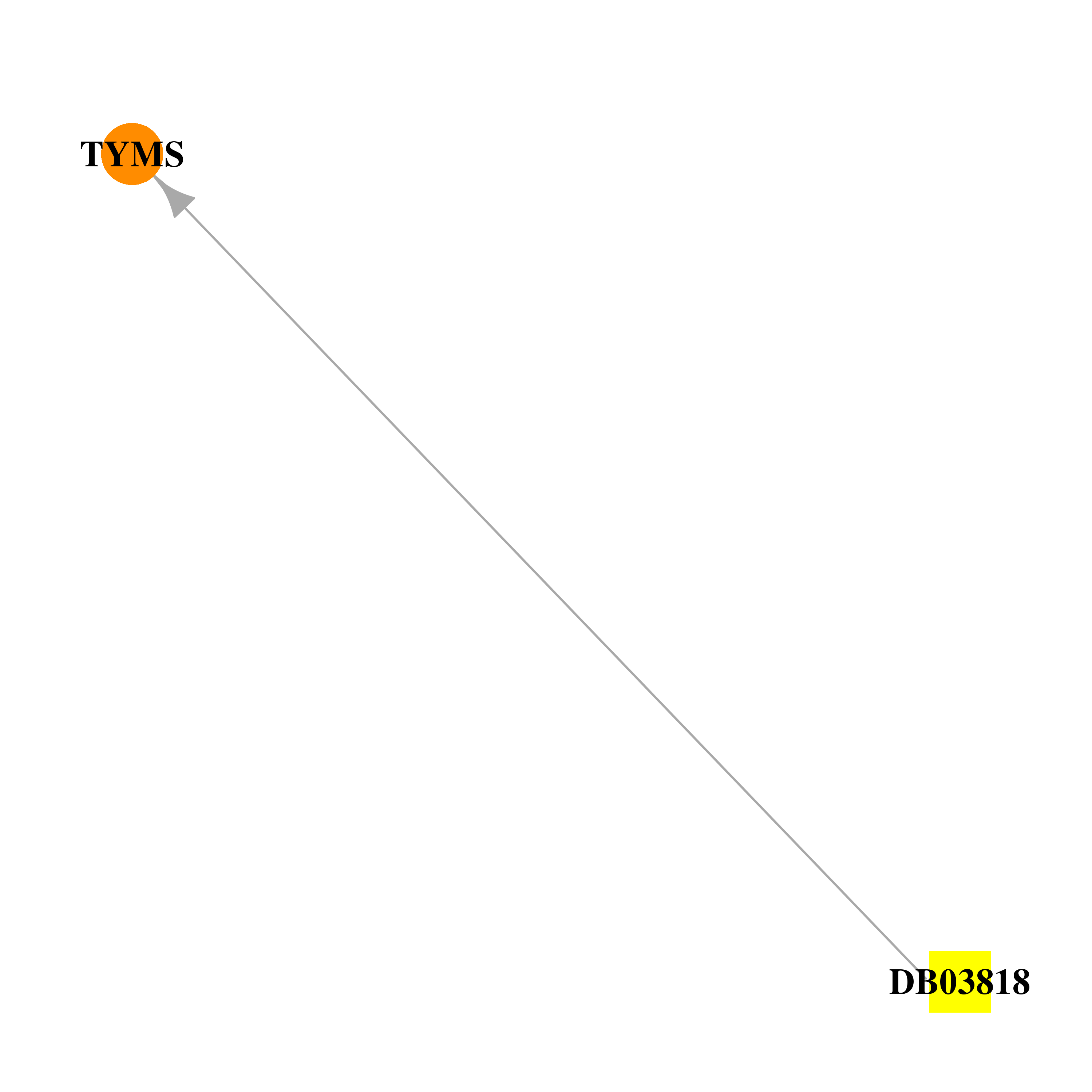 |  |
| DB04447 | thymidylate synthetase | experimental | 1,4-Dithiothreitol | 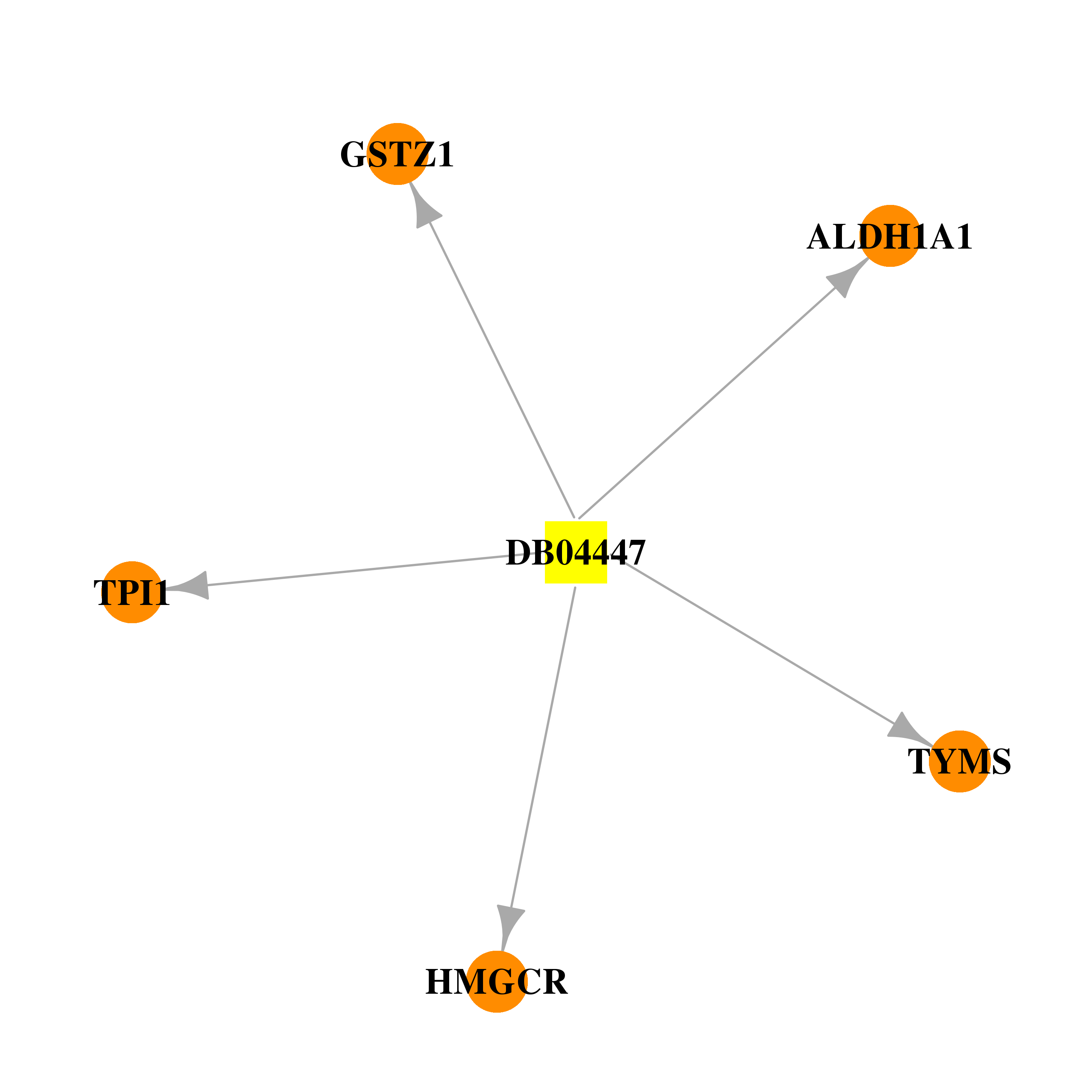 |  |
| DB04457 | thymidylate synthetase | experimental | 2'-Deoxyguanosine-5'-Monophosphate |  |  |
| DB04503 | thymidylate synthetase | experimental | Sp-722 |  | 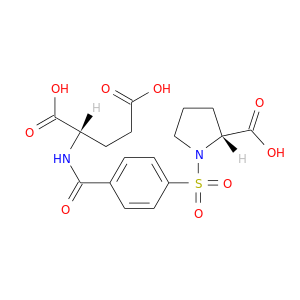 |
| DB04586 | thymidylate synthetase | experimental | 2-bromophenol |  | 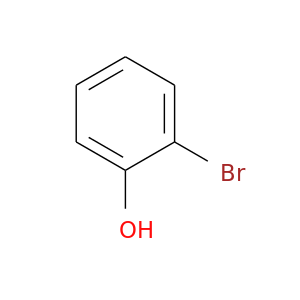 |
| DB04696 | thymidylate synthetase | experimental | 4-CHLORO-3',3''-DIBROMOPHENOL-1,8-NAPHTHALEIN |  |  |
| DB08131 | thymidylate synthetase | experimental | 2-{4-[2-(2-AMINO-4-OXO-4,7-DIHYDRO-3H-PYRROLO[2,3-D]PYRIMIDIN-5-YL)-ETHYL]-BENZOYLAMINO}-3-METHYL-BUTYRIC ACID |  |  |
| DB03685 | thymidylate synthetase | experimental | Uridine-5'-Monophosphate | 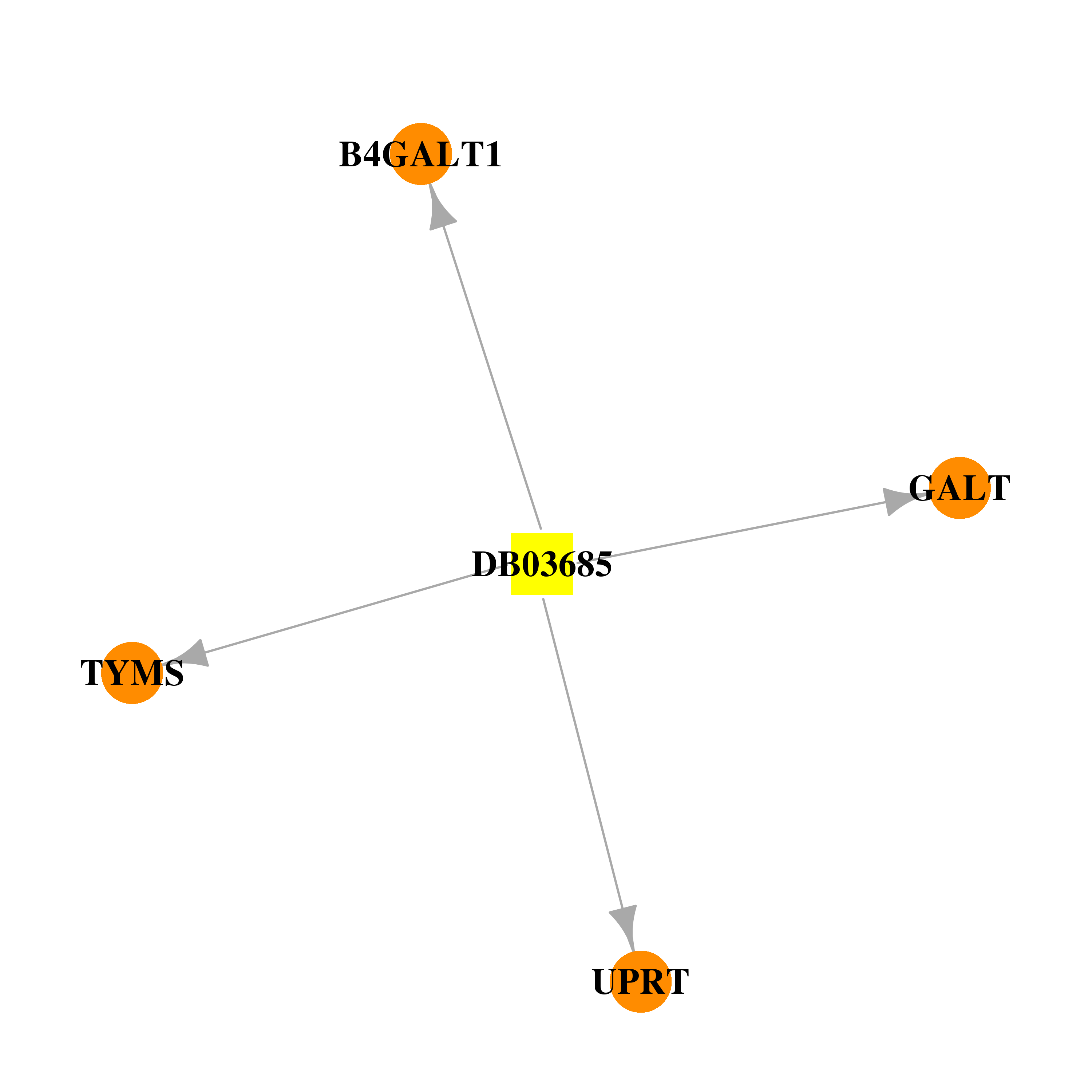 |  |
| DB03798 | thymidylate synthetase | experimental | 2'-Deoxycytidine-5'-Monophosphate |  |  |
| DB06860 | thymidylate synthetase | experimental | 2-(2-chloropyridin-4-yl)-4-methyl-1H-isoindole-1,3(2H)-dione |  |  |
| DB07507 | thymidylate synthetase | experimental | 2-(4-hydroxybiphenyl-3-yl)-4-methyl-1H-isoindole-1,3(2H)-dione | 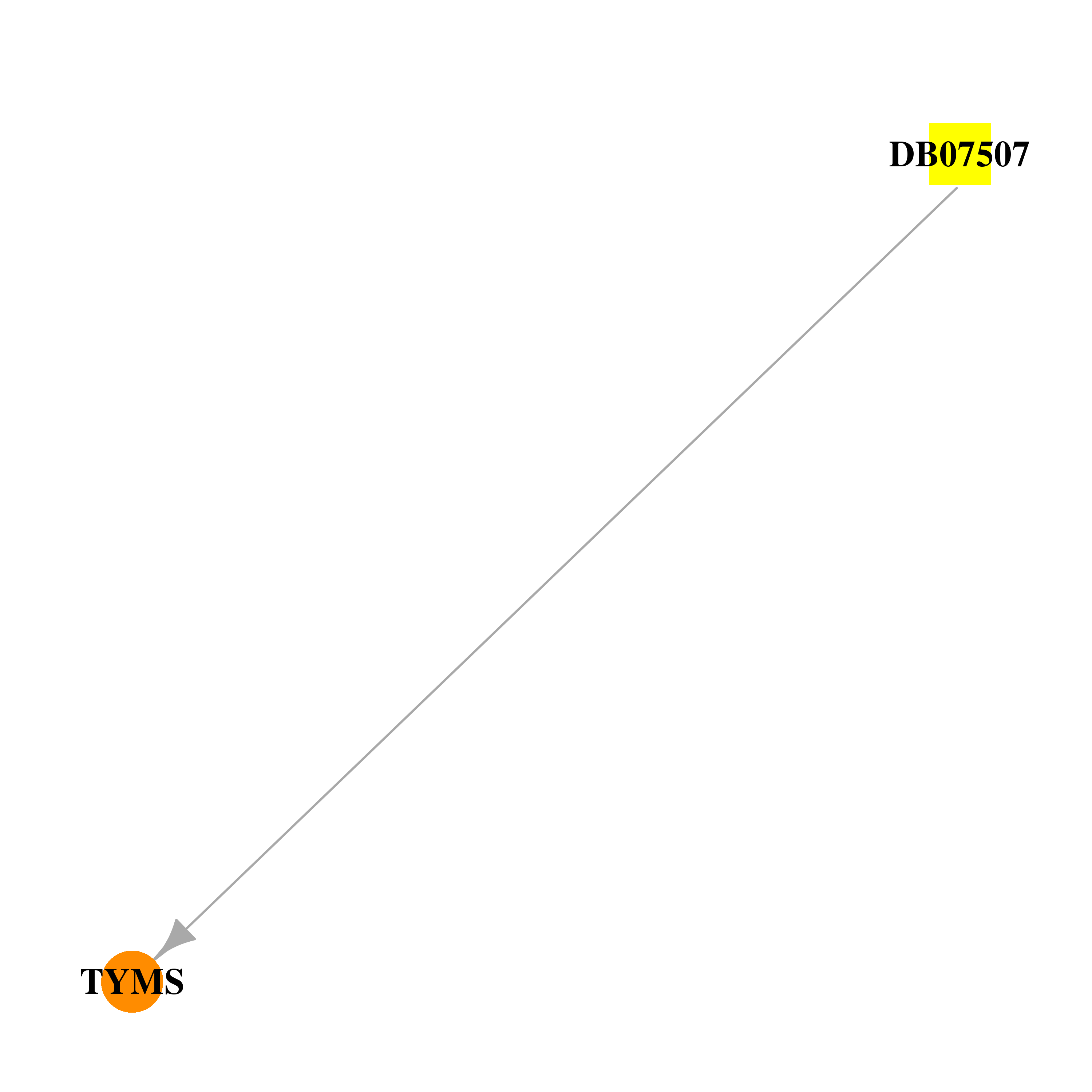 |  |
| DB07511 | thymidylate synthetase | experimental | 4-(4-methyl-1,3-dioxo-1,3-dihydro-2H-isoindol-2-yl)benzonitrile |  | 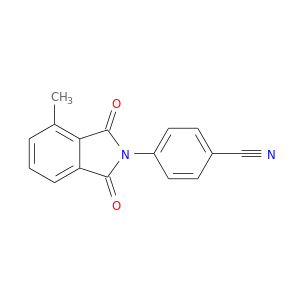 |
| DB08204 | thymidylate synthetase | experimental | 3-DIPHENOL-6-NITRO-3H-BENZO[DE]ISOCHROMEN-1-ONE | 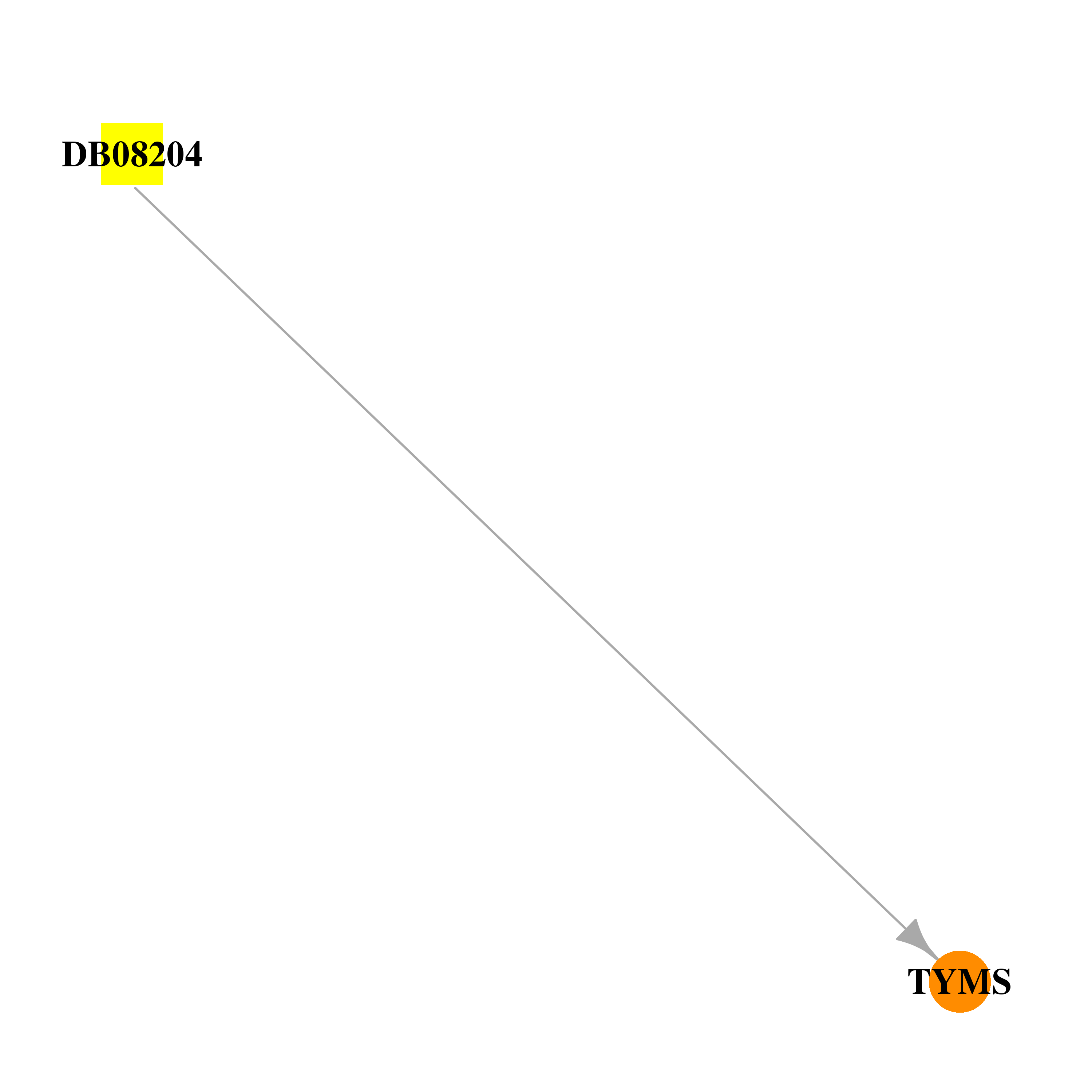 | 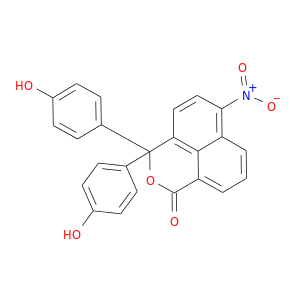 |
| DB01234 | thymidylate synthetase | approved; investigational | Dexamethasone | 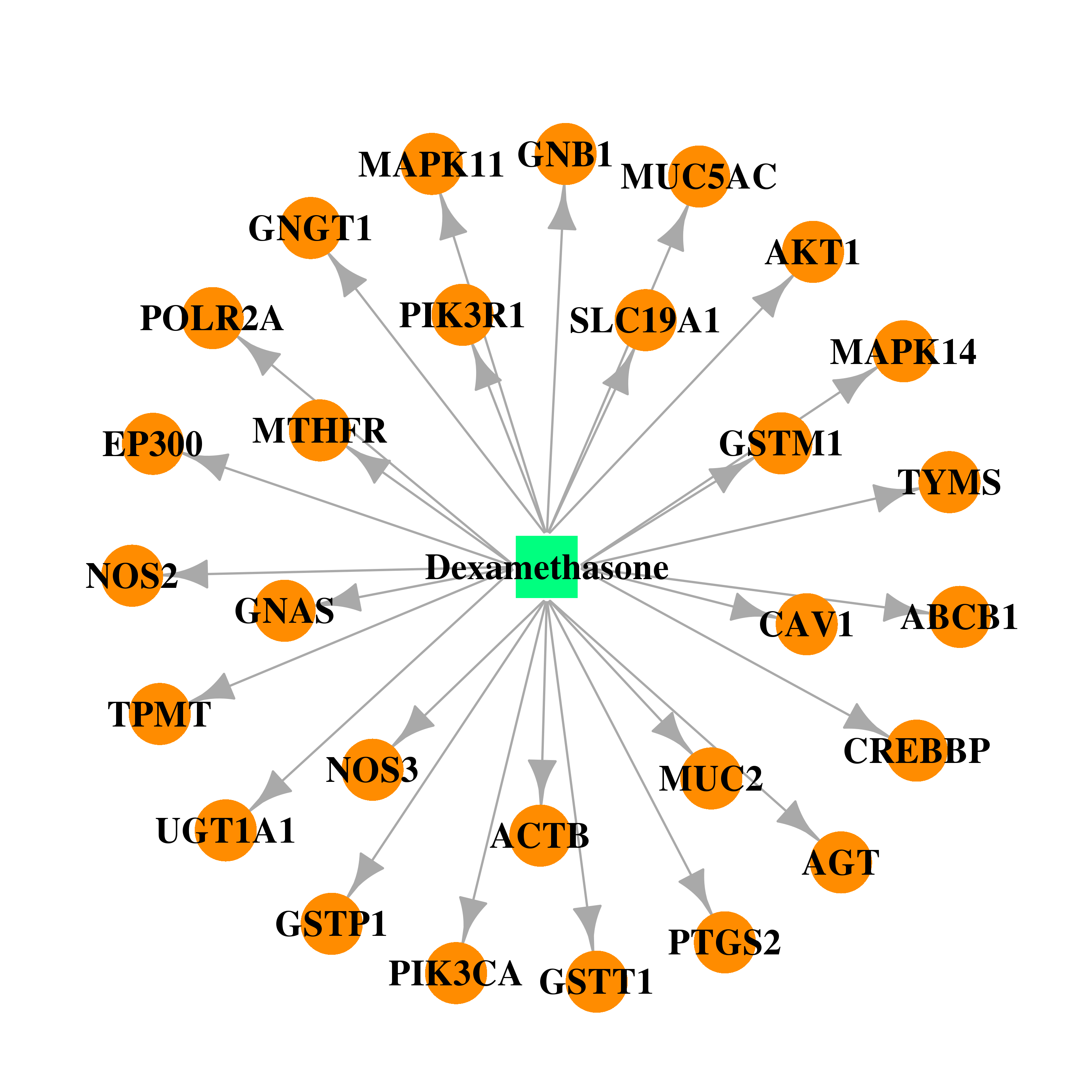 | 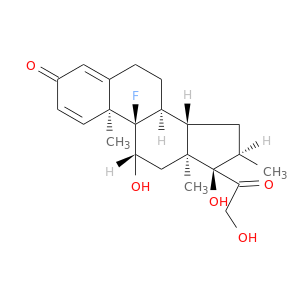 |
| DB00531 | thymidylate synthetase | approved; investigational | Cyclophosphamide | 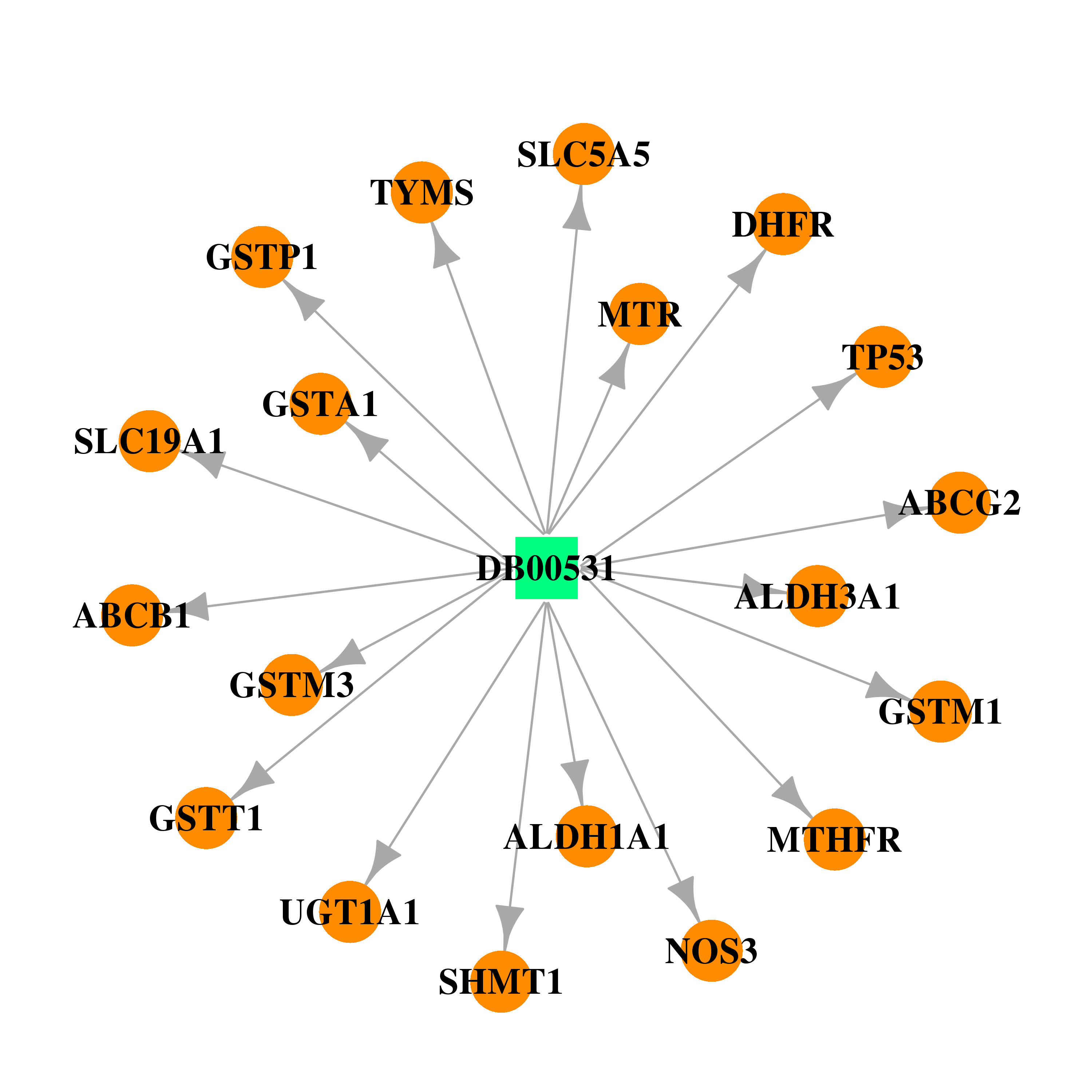 | 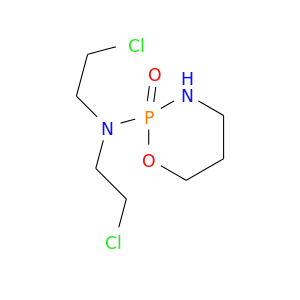 |
| DB00970 | thymidylate synthetase | approved | Dactinomycin | 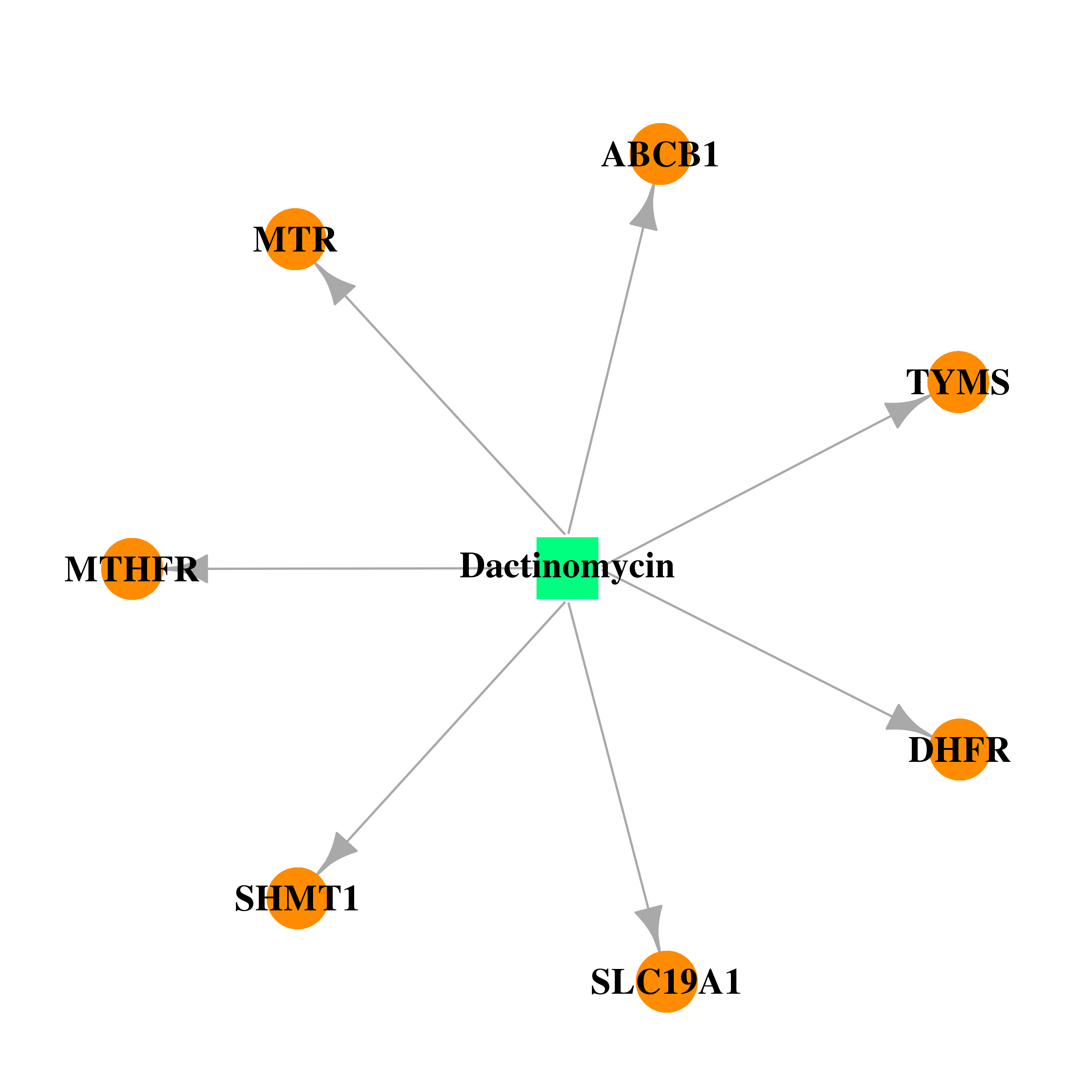 | 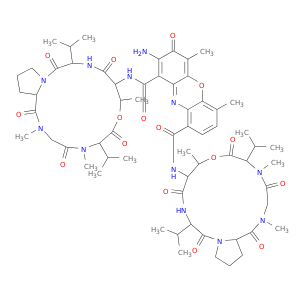 |
| DB00997 | thymidylate synthetase | approved; investigational | Doxorubicin |  | 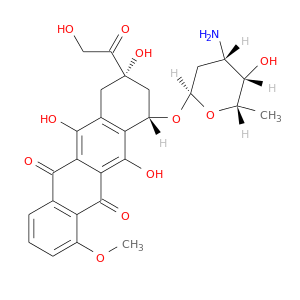 |
| DB01611 | thymidylate synthetase | approved | Hydroxychloroquine |  |  |
| DB00795 | thymidylate synthetase | approved | Sulfasalazine |  | 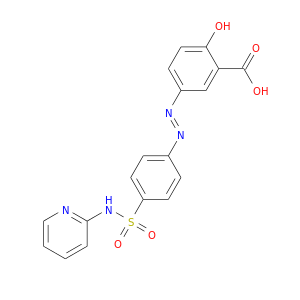 |
| DB00130 | thymidylate synthetase | approved; nutraceutical; investigational | L-Glutamine |  | 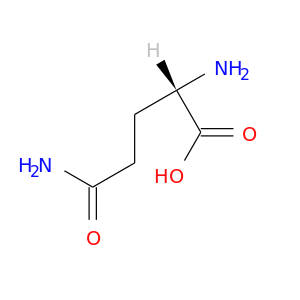 |
| DB00515 | thymidylate synthetase | approved | Cisplatin |  |  |
| DB00115 | thymidylate synthetase | approved; nutraceutical | Cyanocobalamin |  | 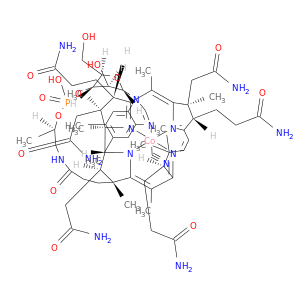 |
| DB00158 | thymidylate synthetase | approved; nutraceutical | Folic Acid | 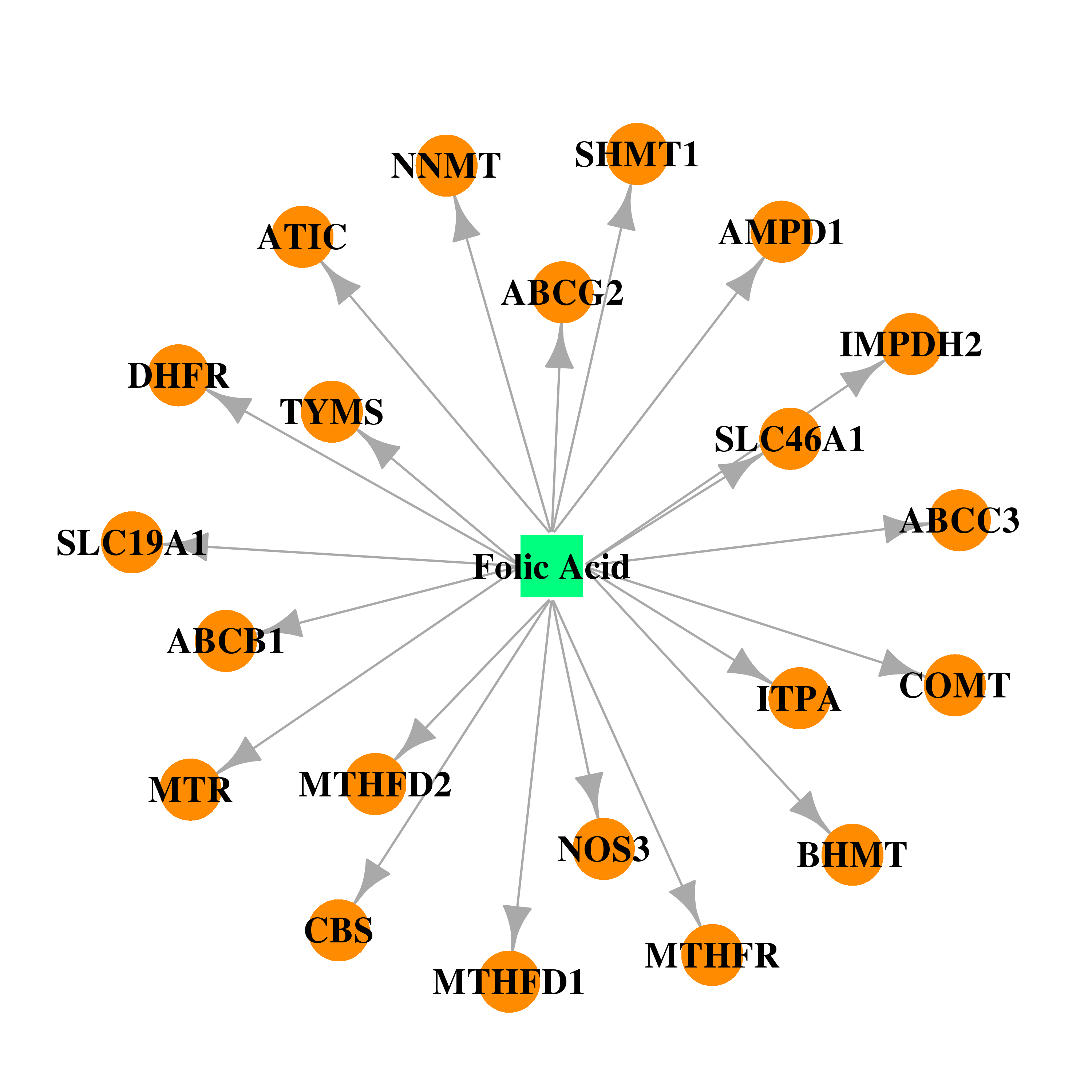 | 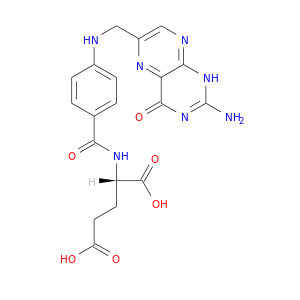 |
| DB00165 | thymidylate synthetase | approved; nutraceutical | Pyridoxine | 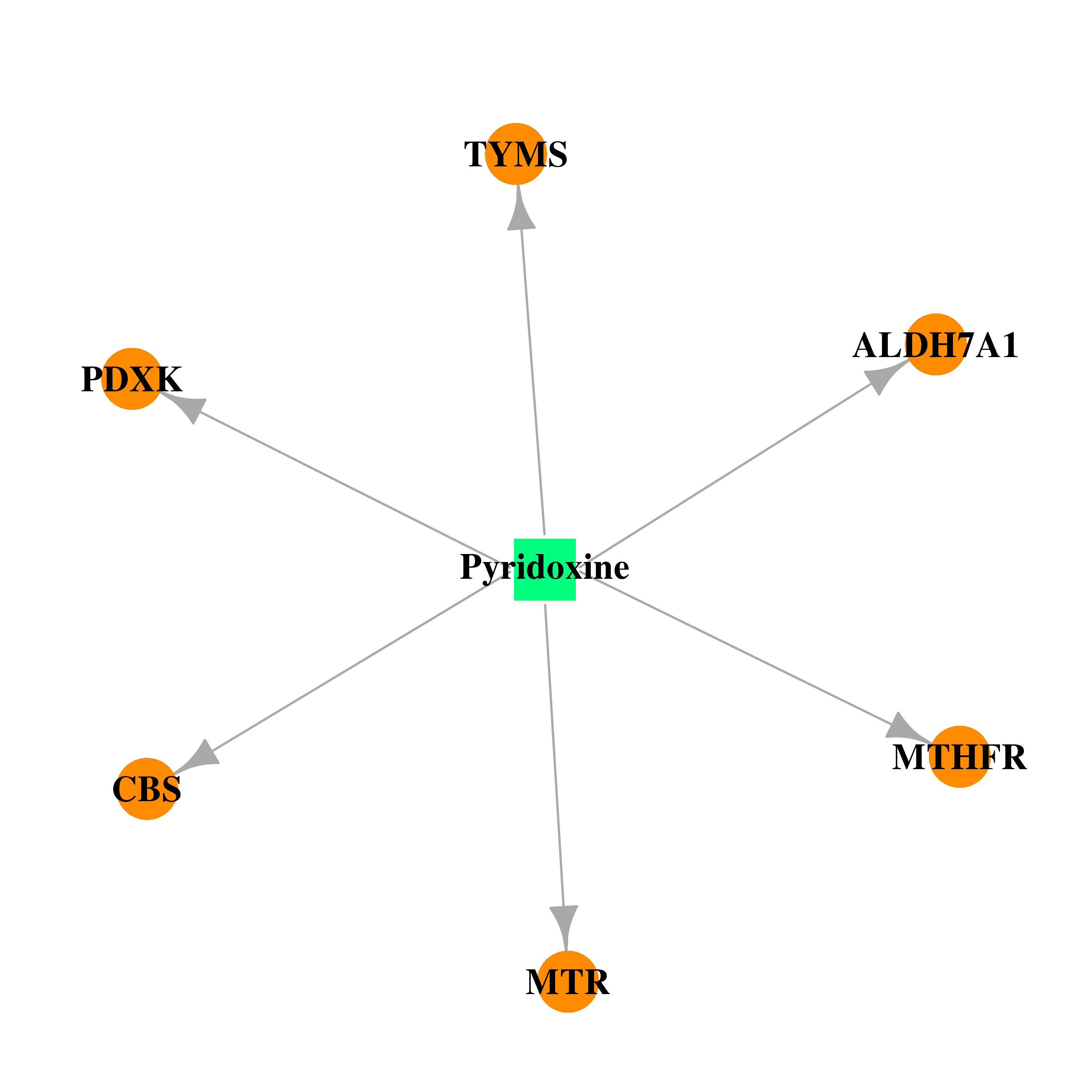 |  |
| DB00526 | thymidylate synthetase | approved; investigational | Oxaliplatin | 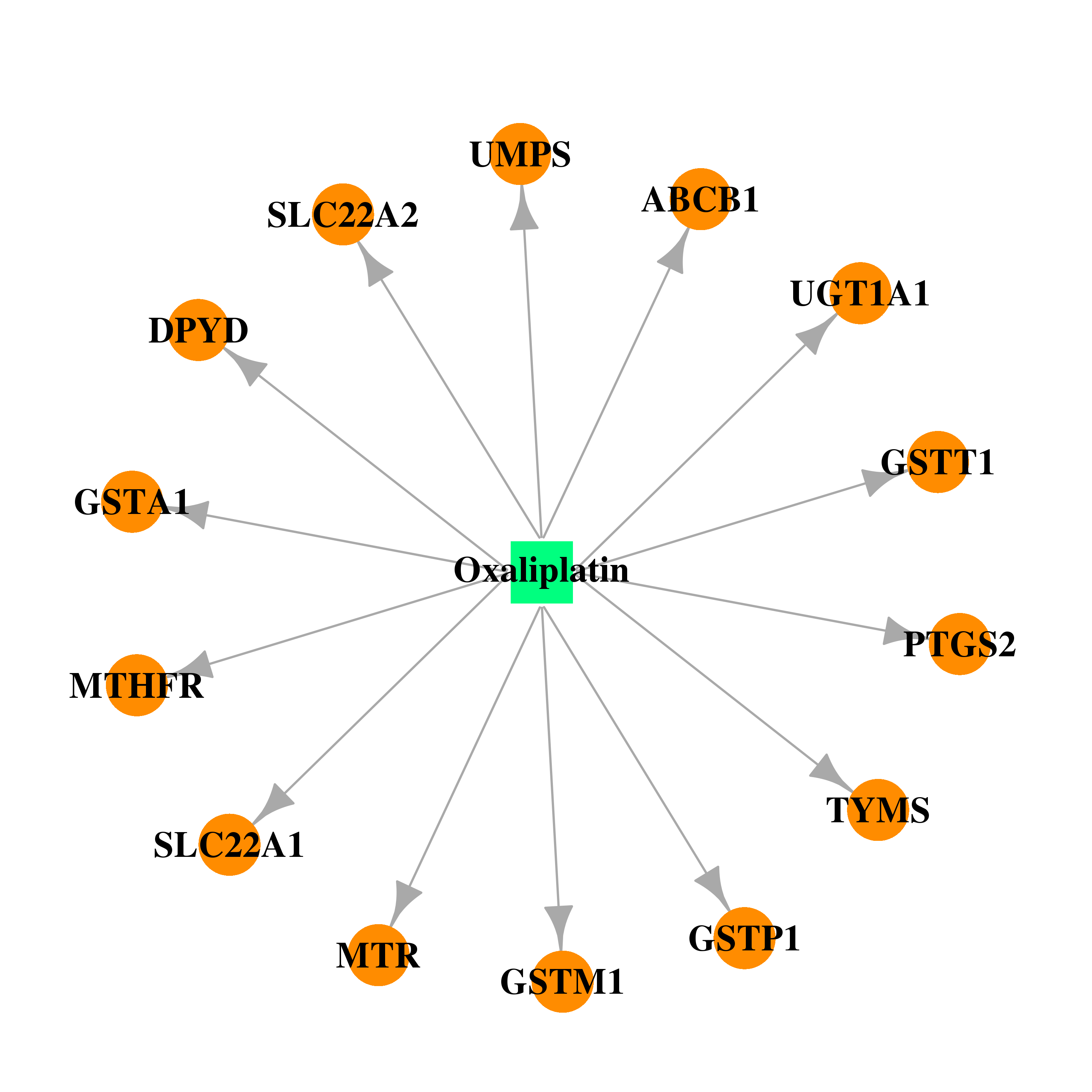 |  |
| DB00987 | thymidylate synthetase | approved; investigational | Cytarabine |  | 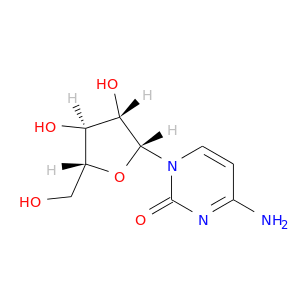 |
| DB00694 | thymidylate synthetase | approved | Daunorubicin | 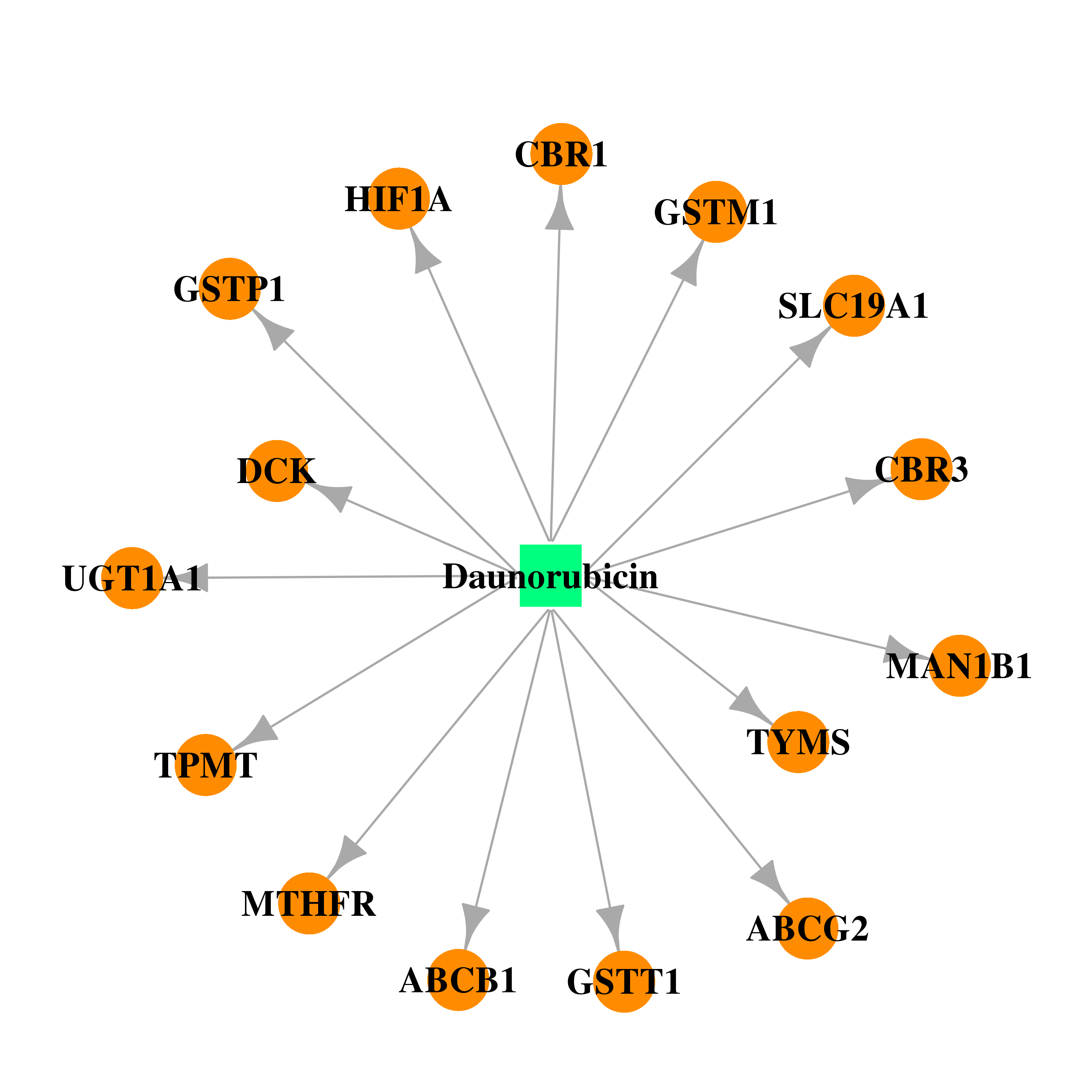 |  |
| DB00773 | thymidylate synthetase | approved | Etoposide |  |  |
| DB01033 | thymidylate synthetase | approved | Mercaptopurine | 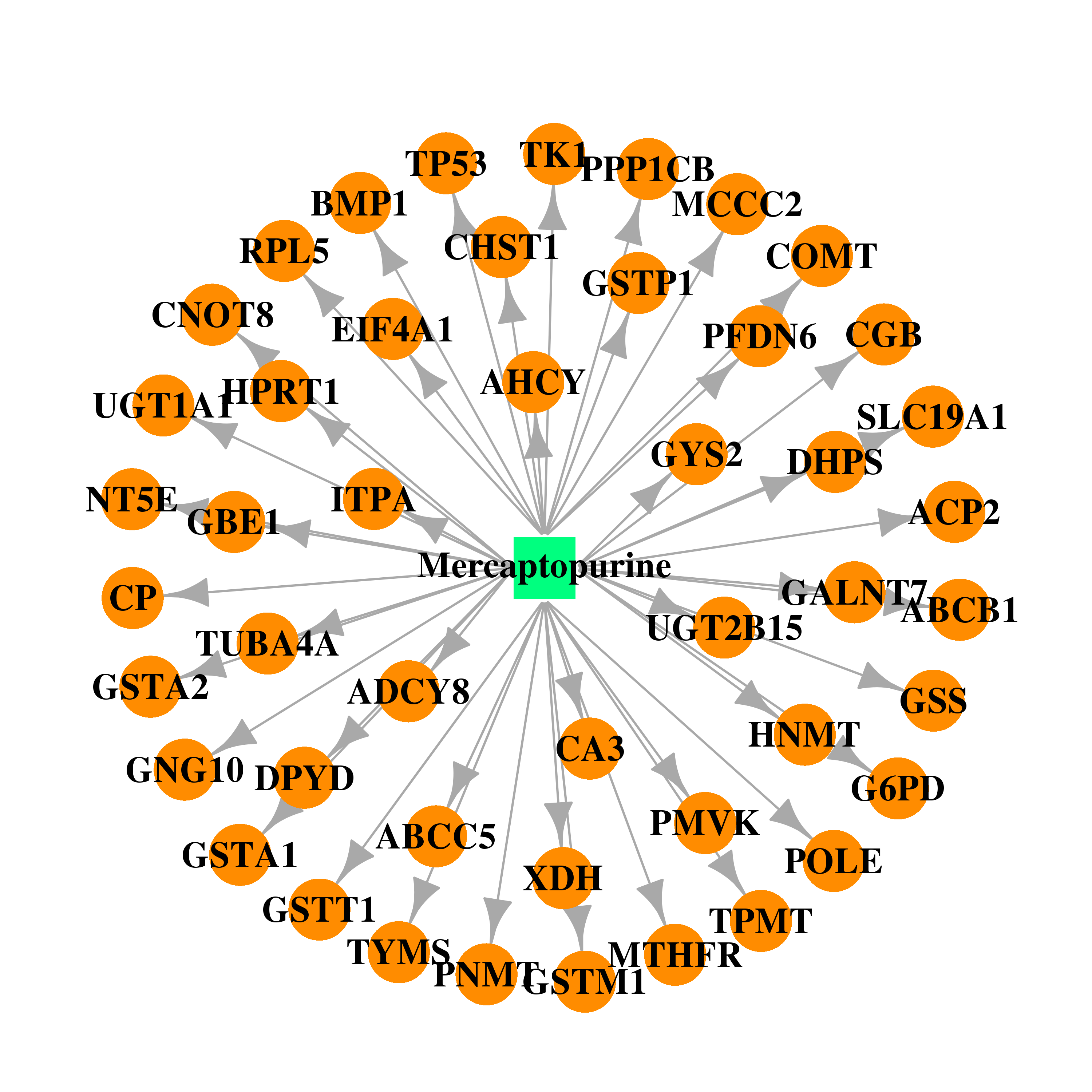 |  |
| DB00563 | thymidylate synthetase | approved | Methotrexate | 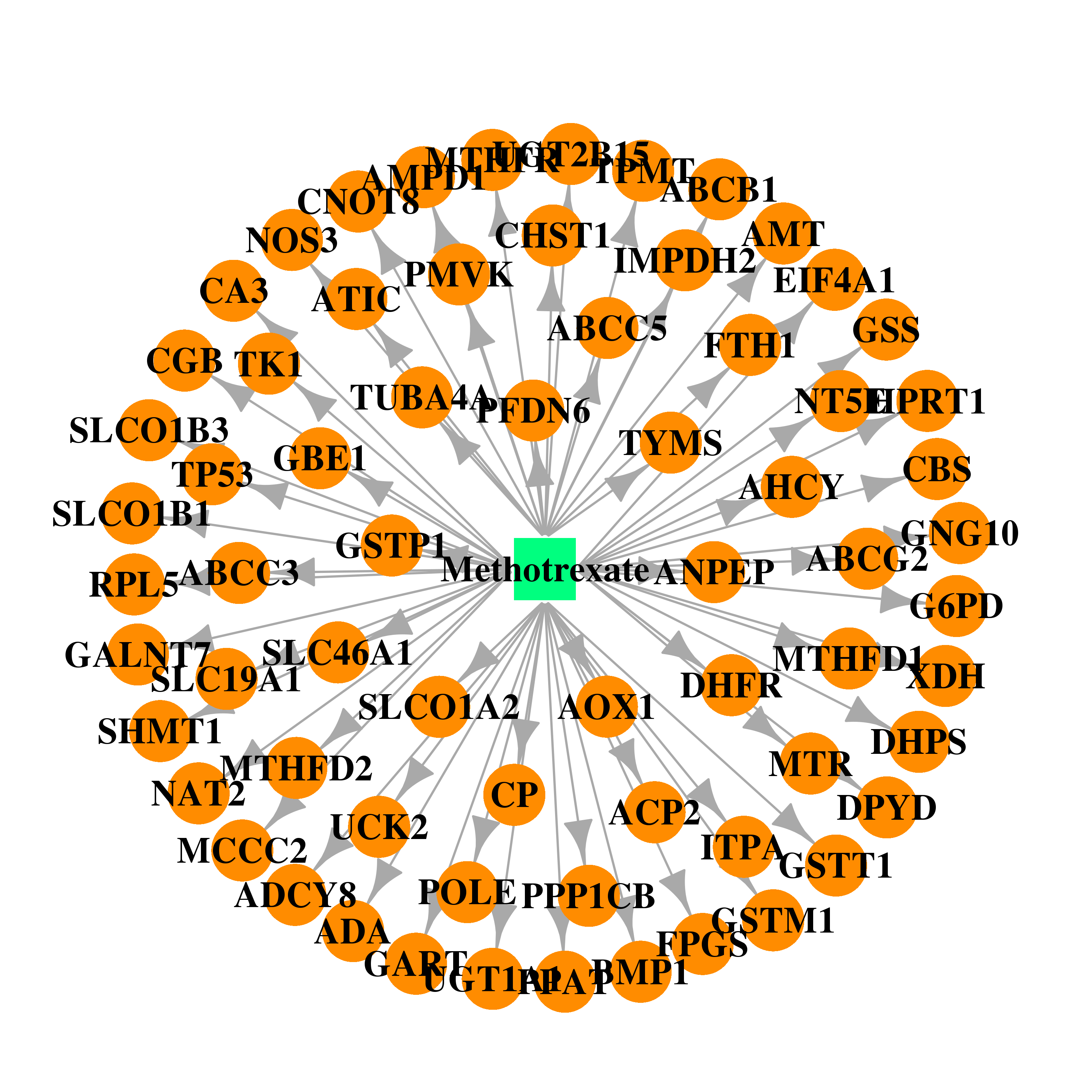 |  |
| DB00635 | thymidylate synthetase | approved | Prednisone | 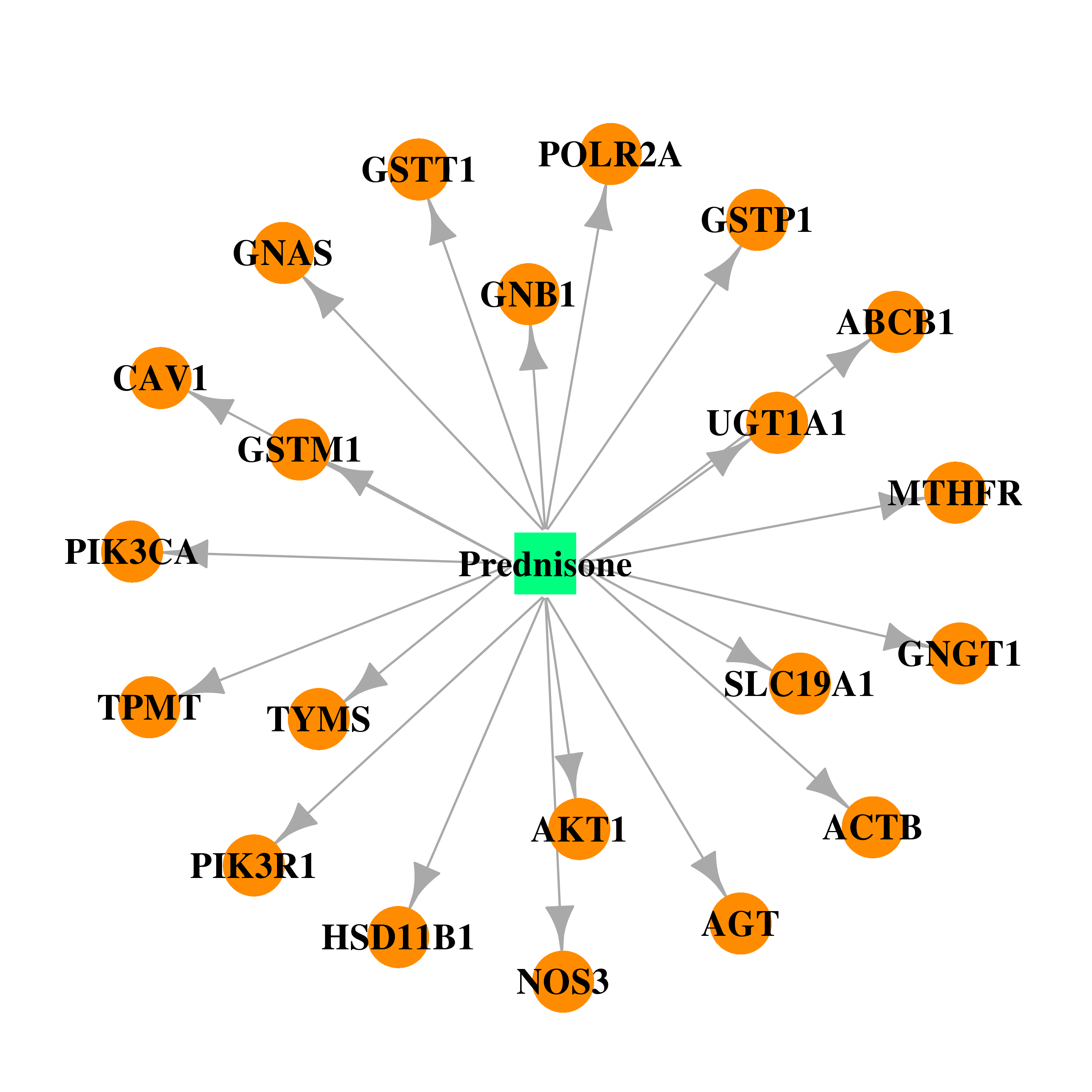 |  |
| DB00541 | thymidylate synthetase | approved; investigational | Vincristine | 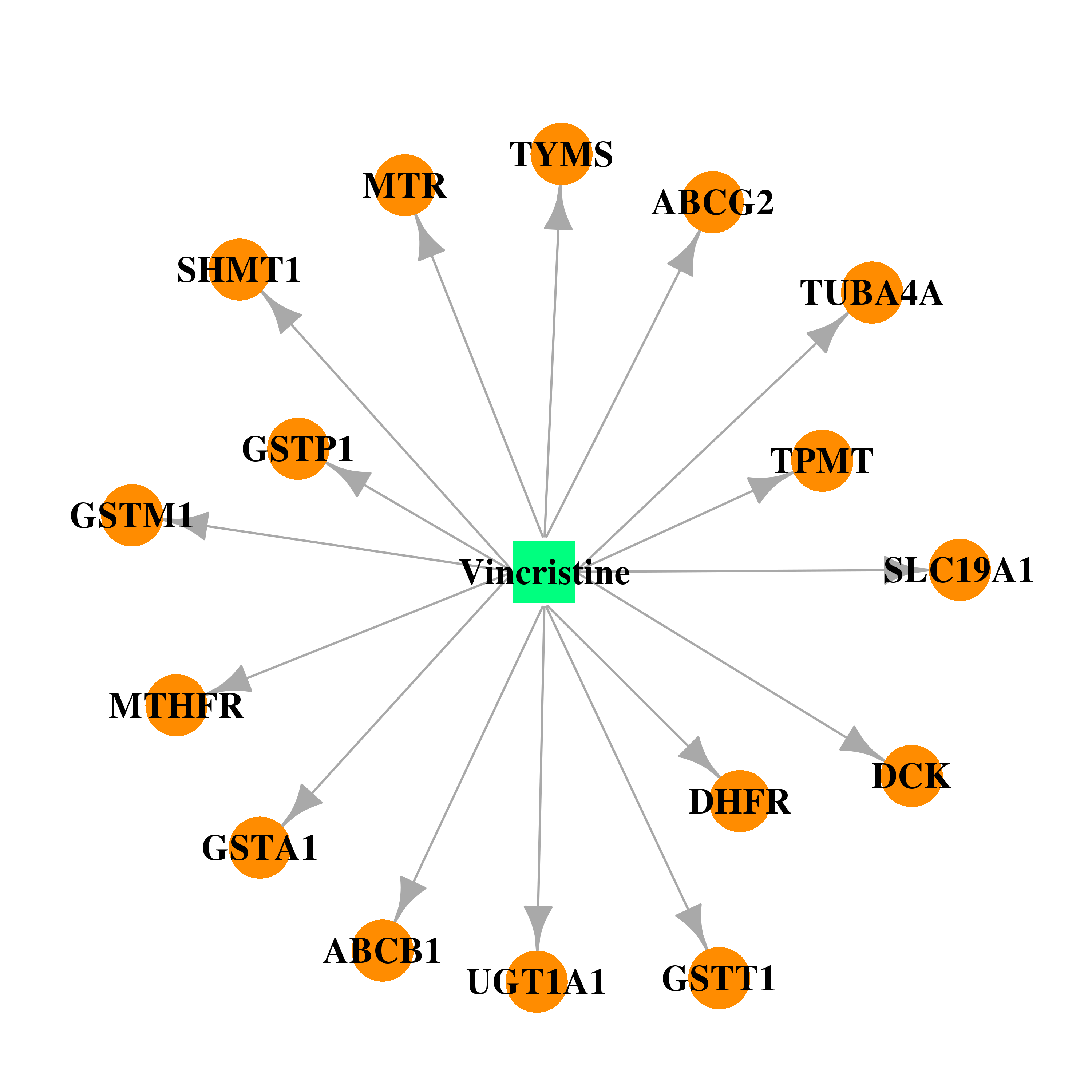 | 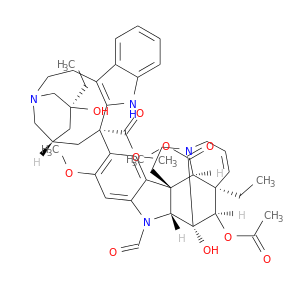 |
| DB00762 | thymidylate synthetase | approved; investigational | Irinotecan |  | 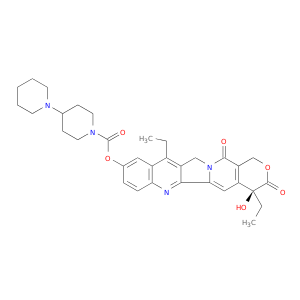 |
| DB01050 | thymidylate synthetase | approved | Ibuprofen | 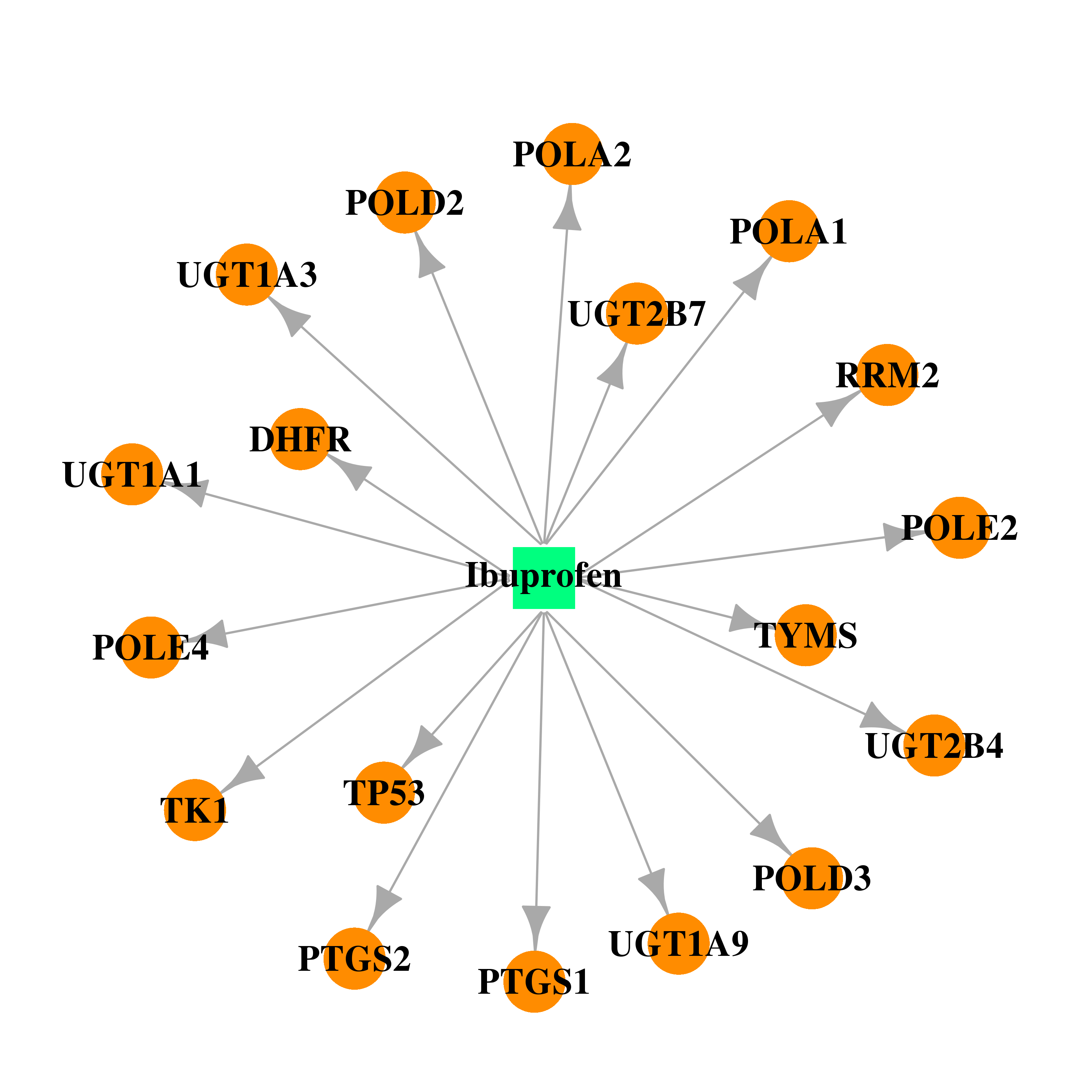 | 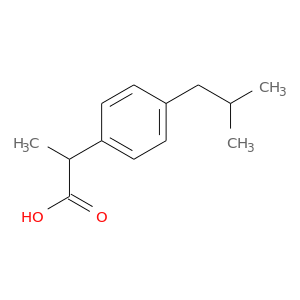 |
| DB00958 | thymidylate synthetase | approved | Carboplatin | 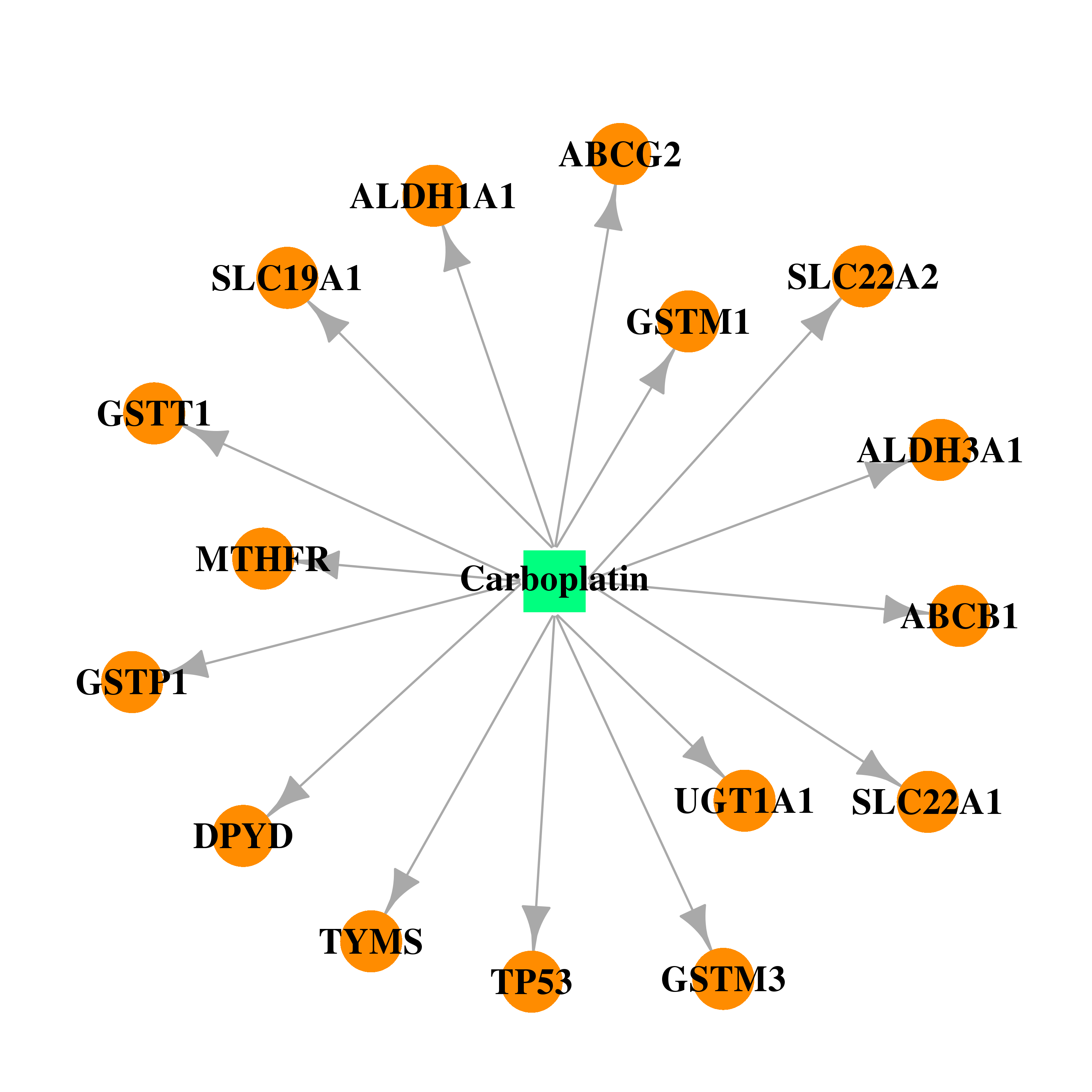 |  |
| Top |
| Cross referenced IDs for TYMS |
| * We obtained these cross-references from Uniprot database. It covers 150 different DBs, 18 categories. http://www.uniprot.org/help/cross_references_section |
: Open all cross reference information
|
Copyright © 2016-Present - The Univsersity of Texas Health Science Center at Houston @ |






